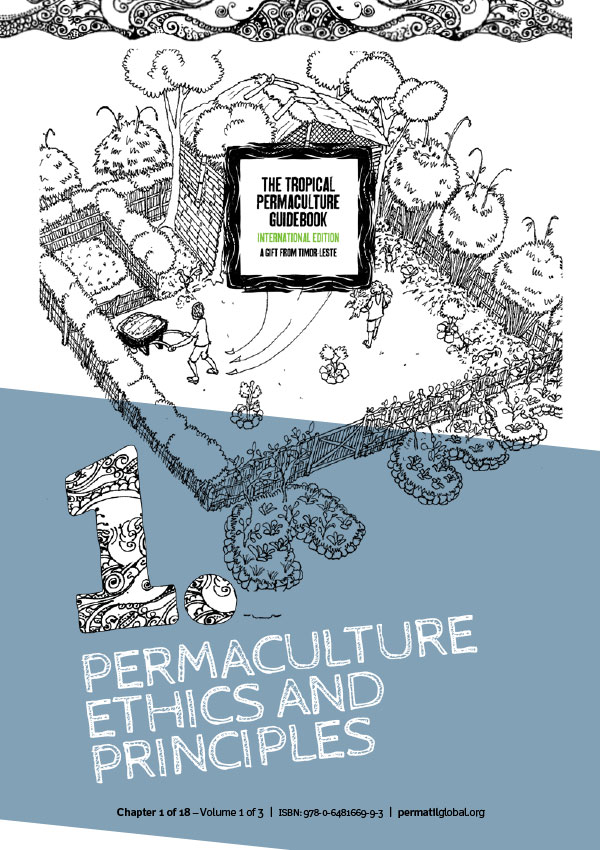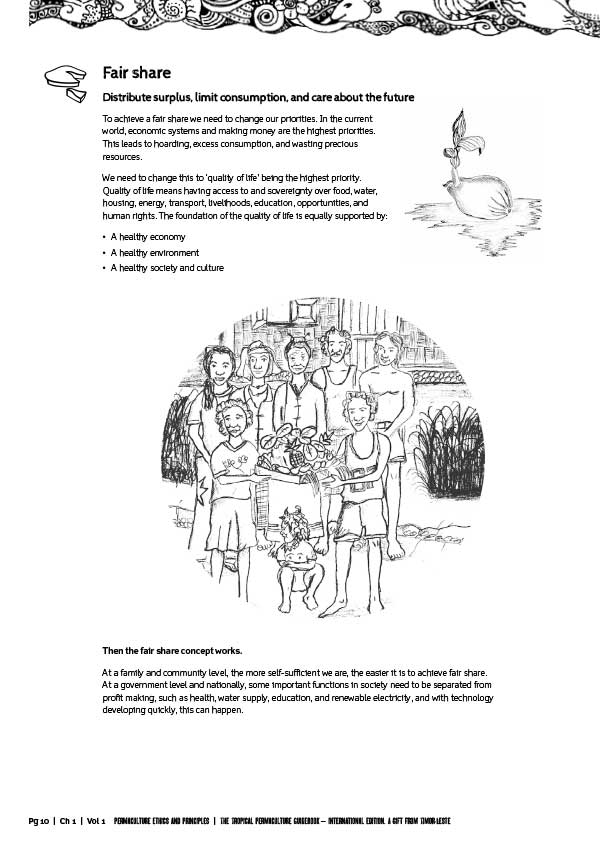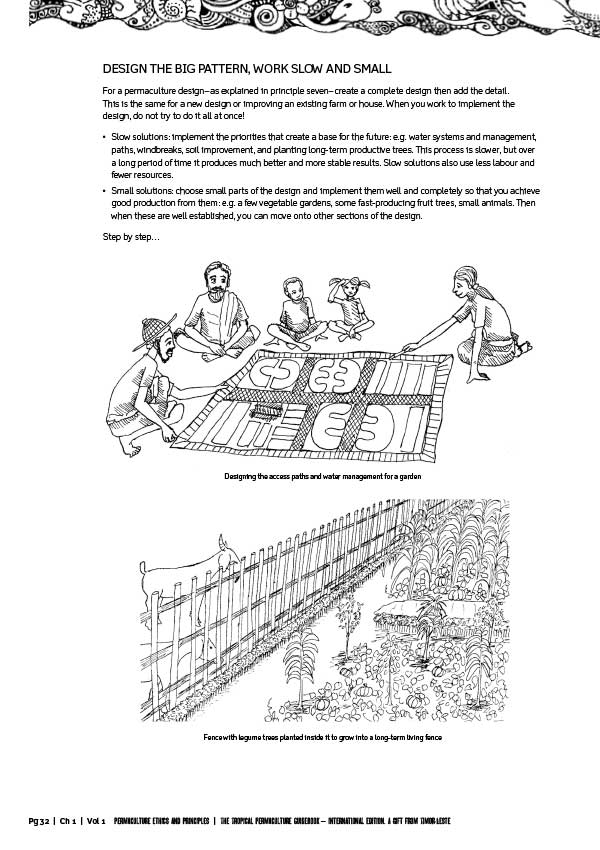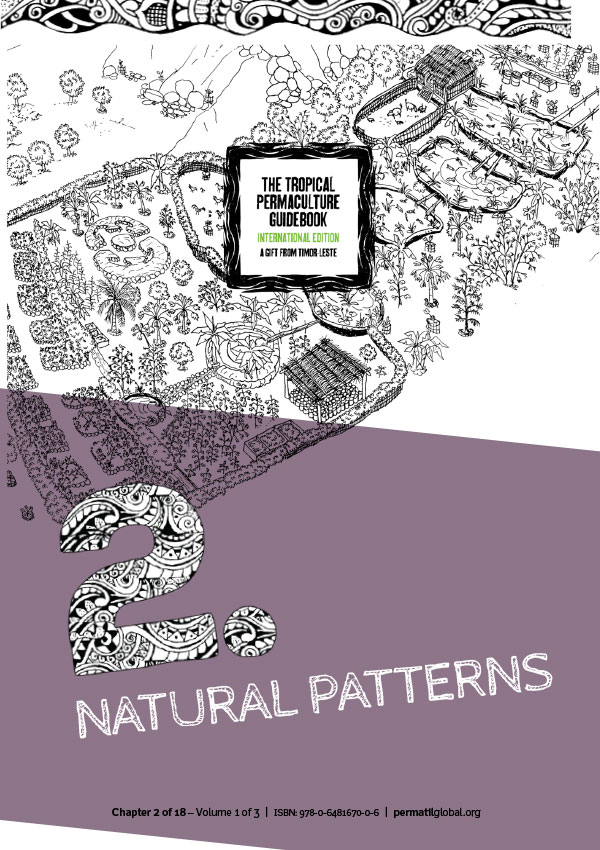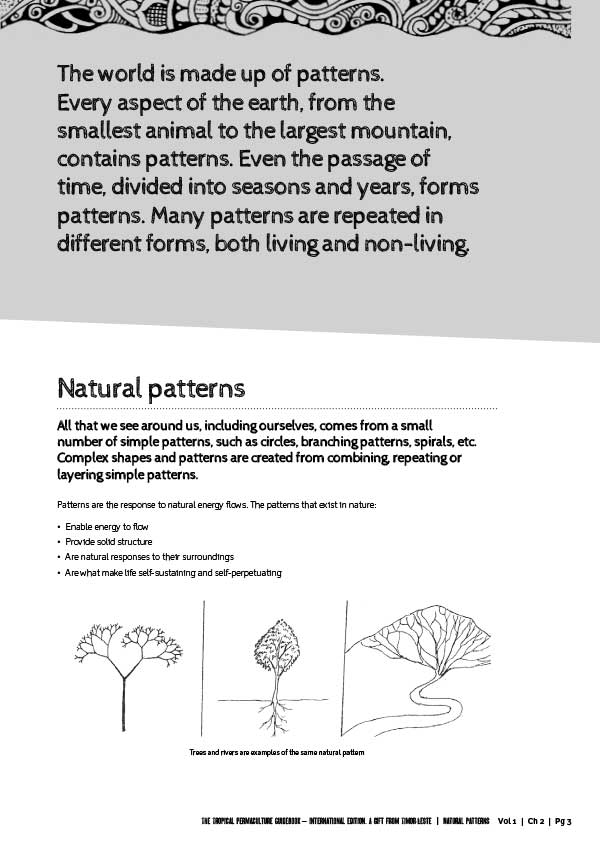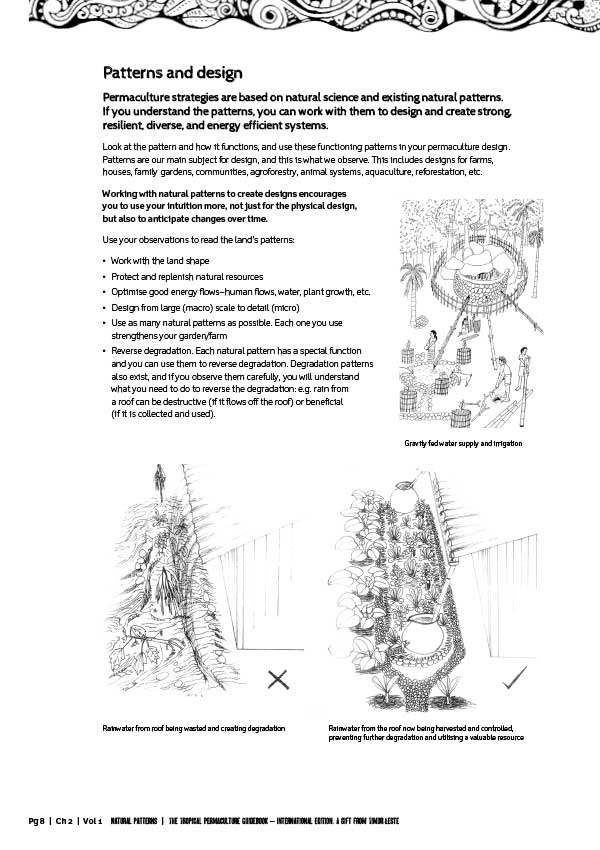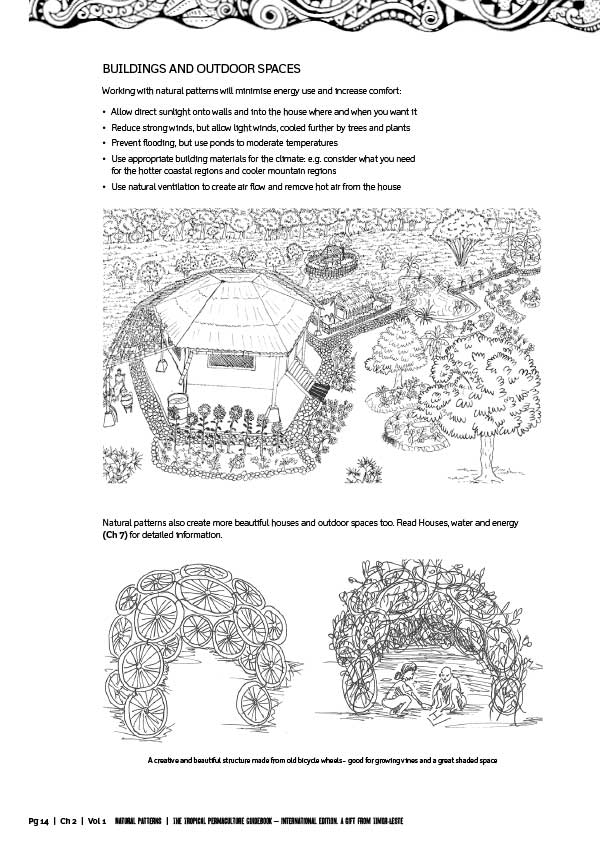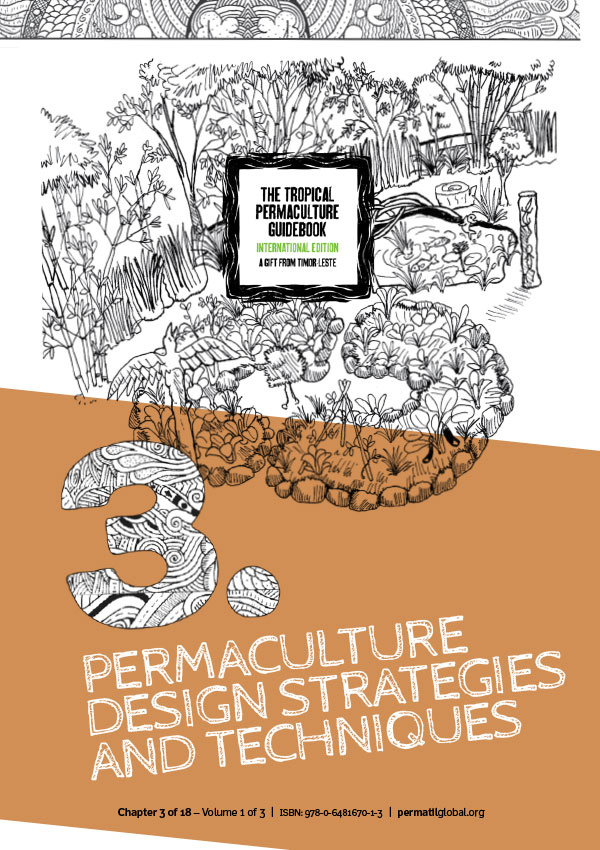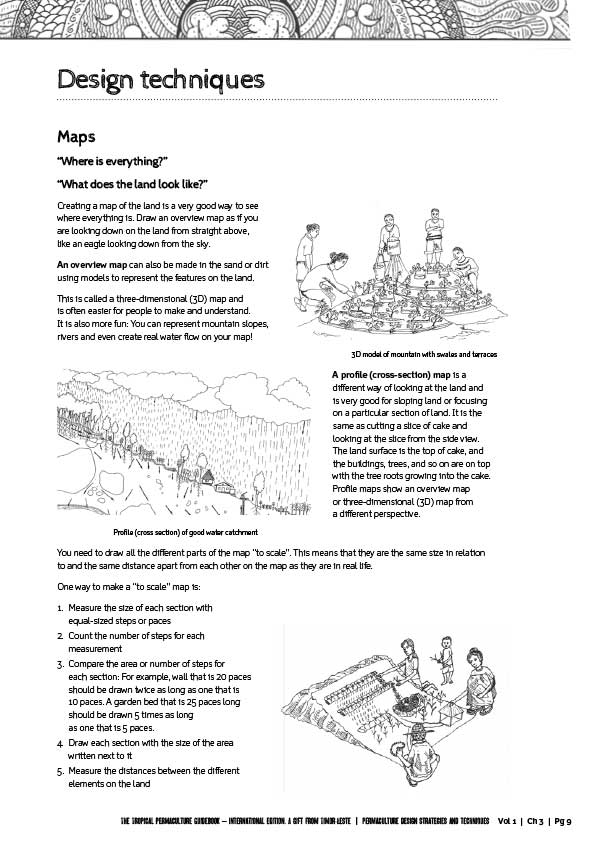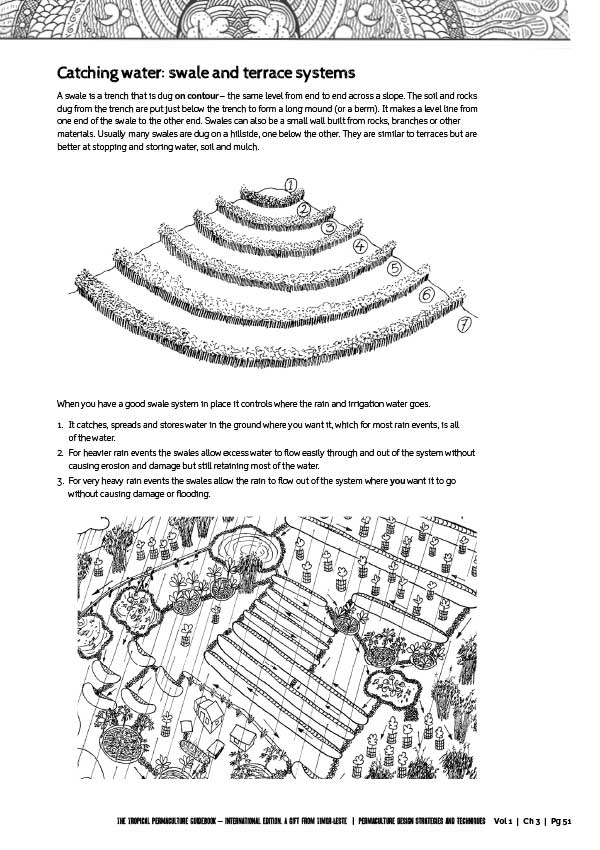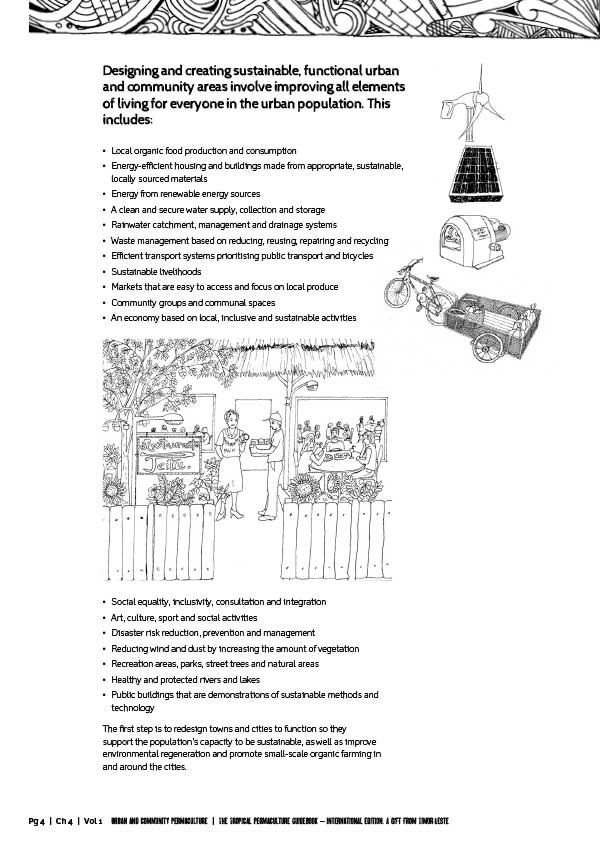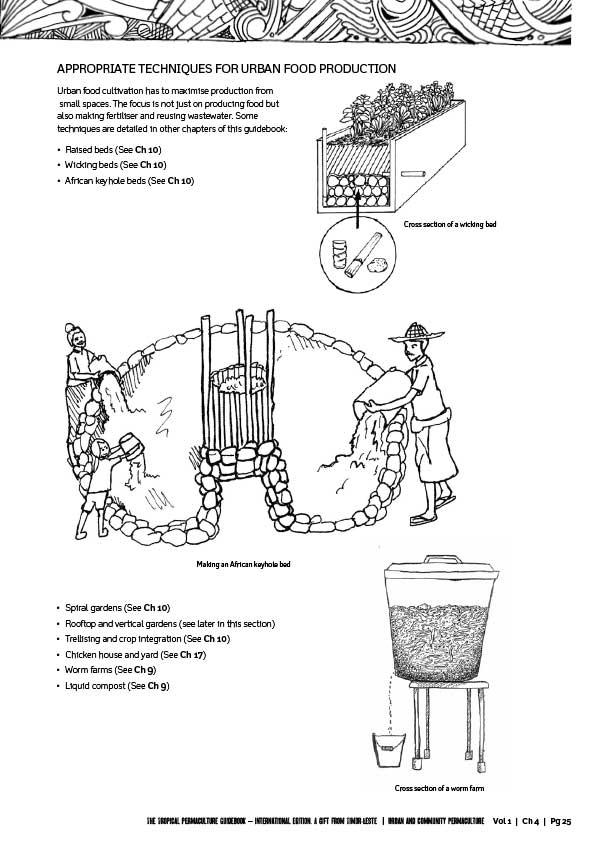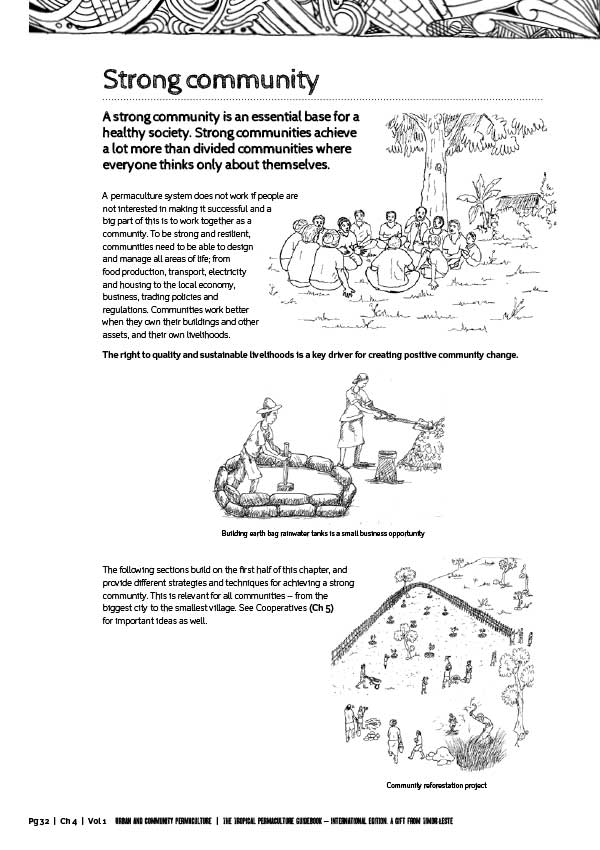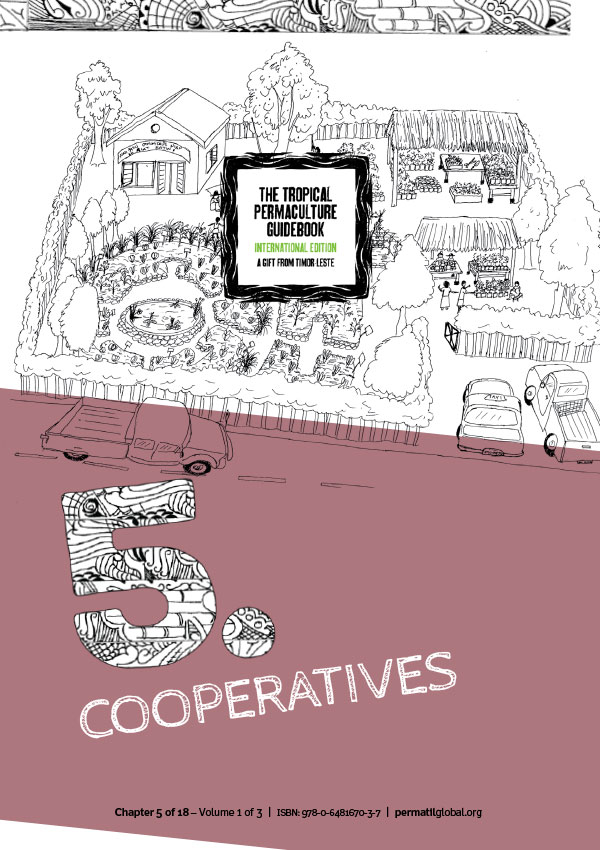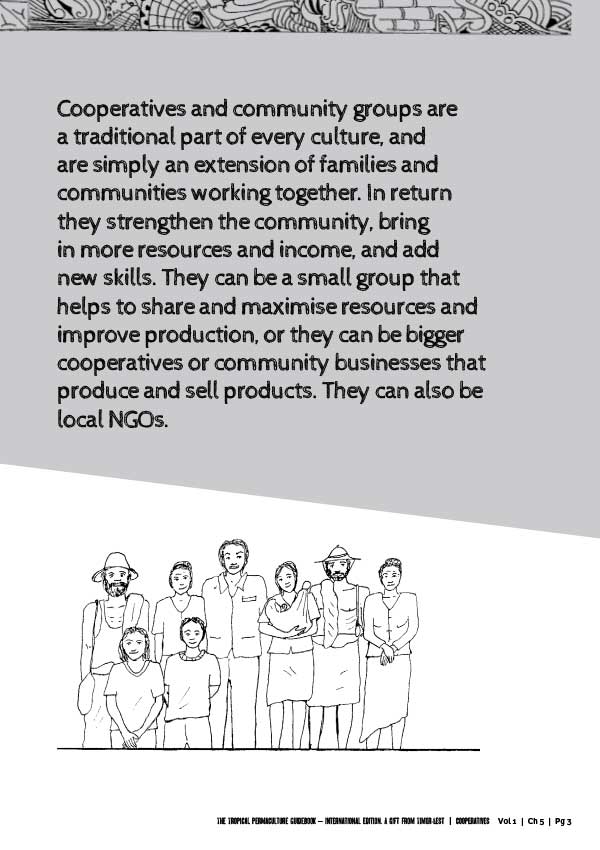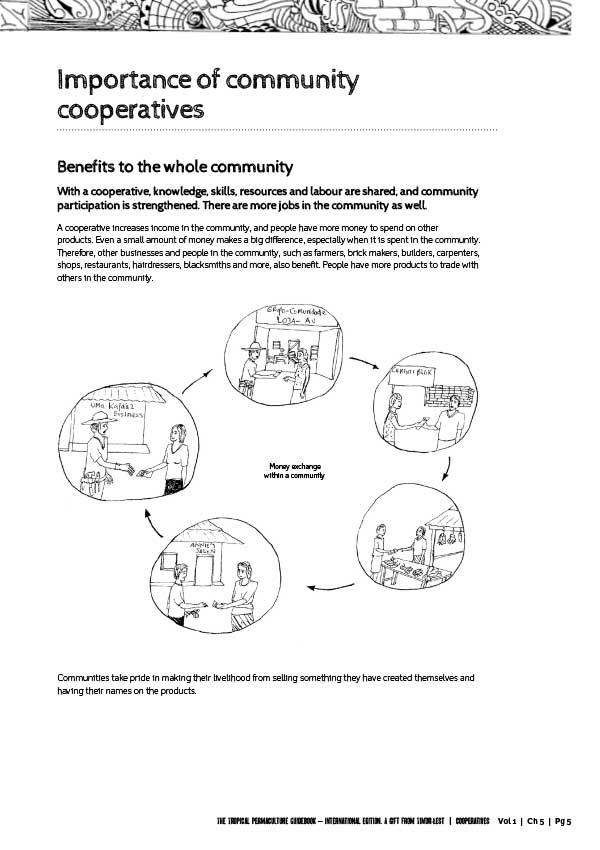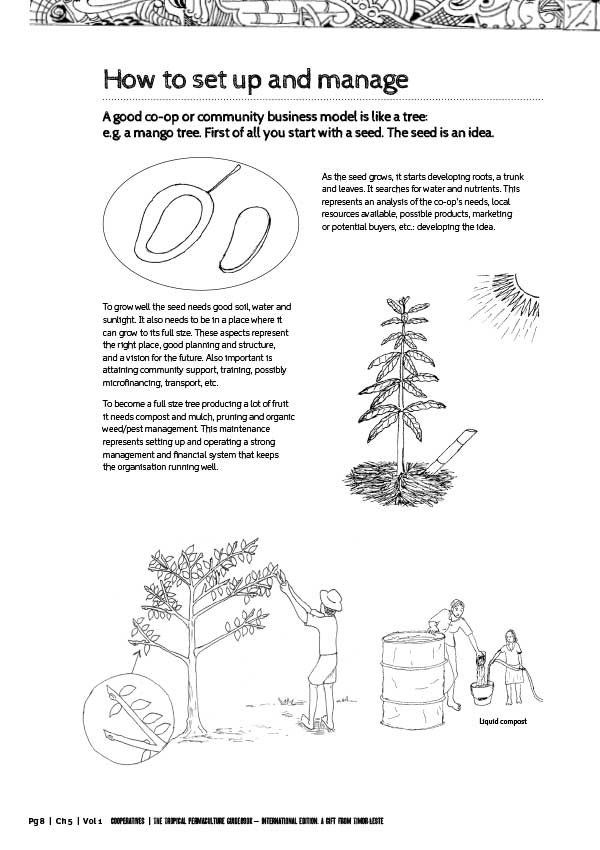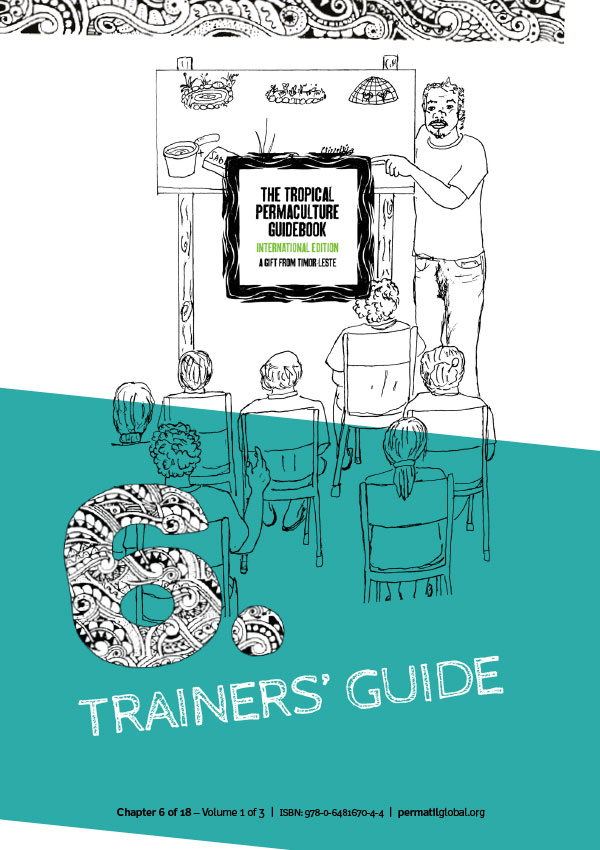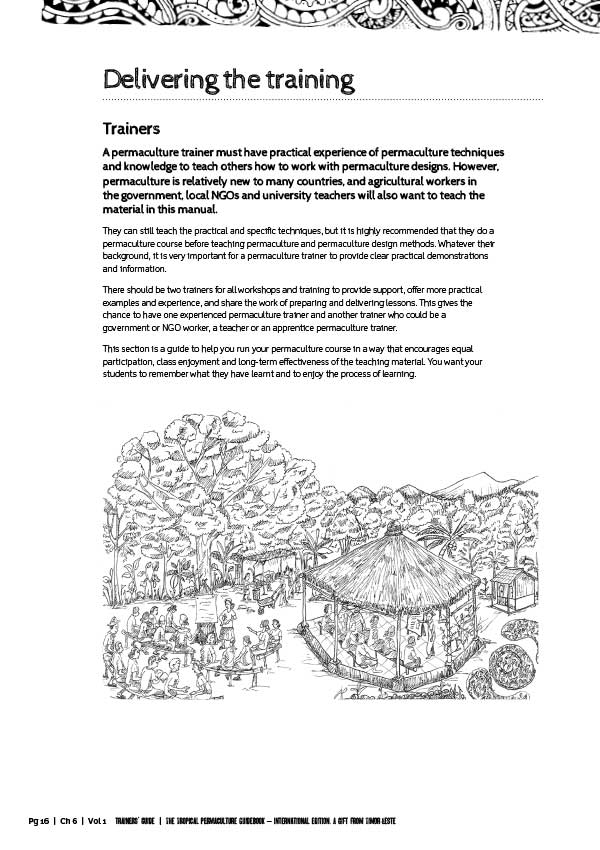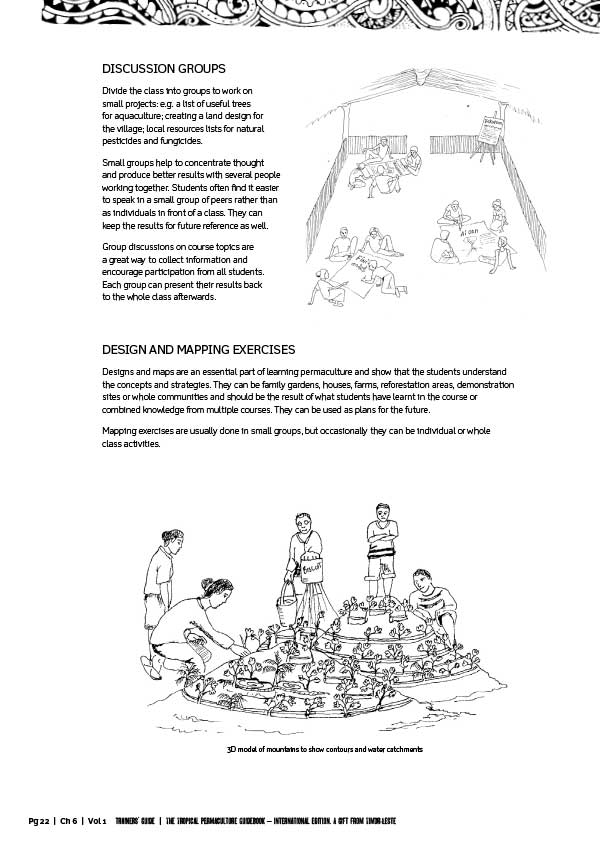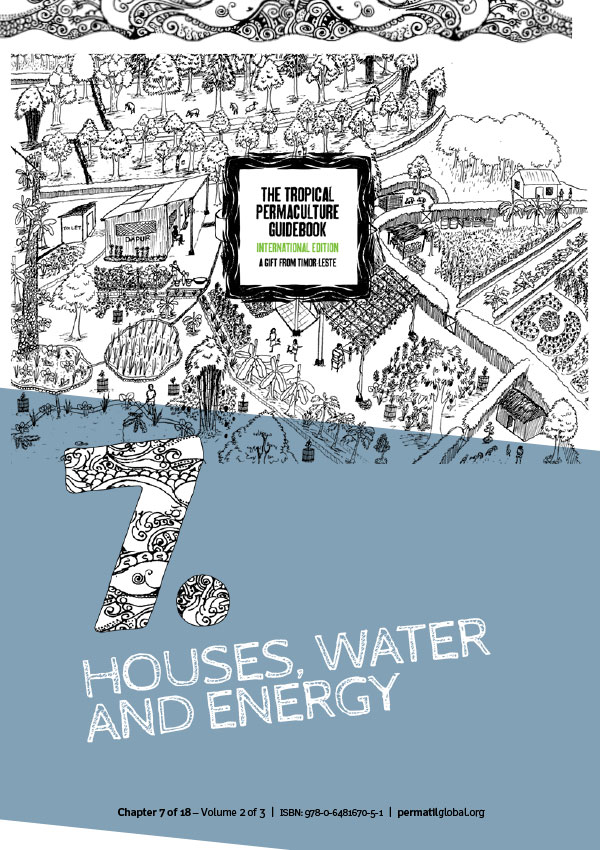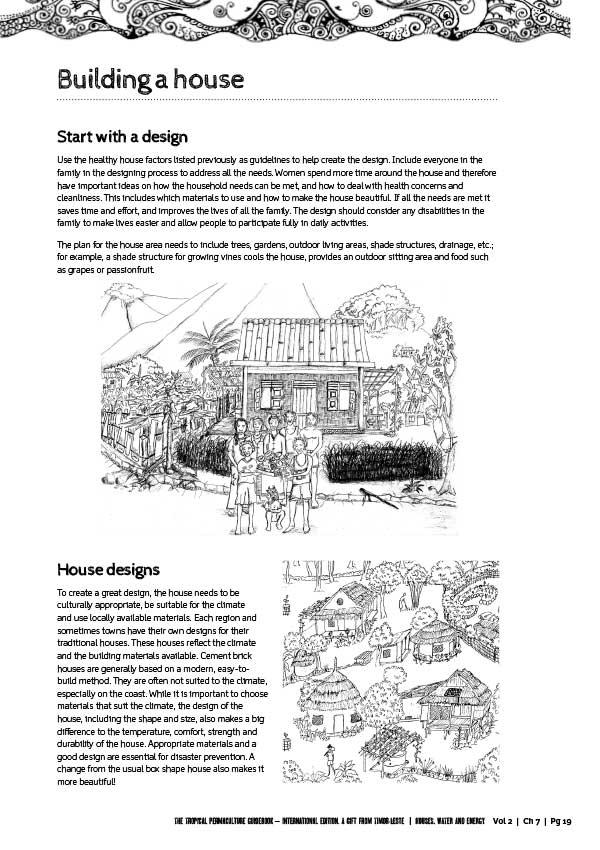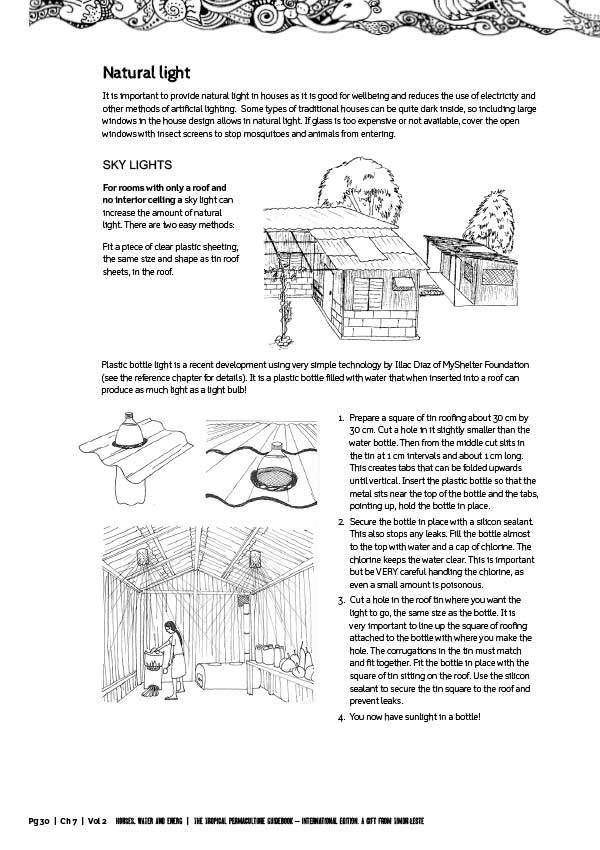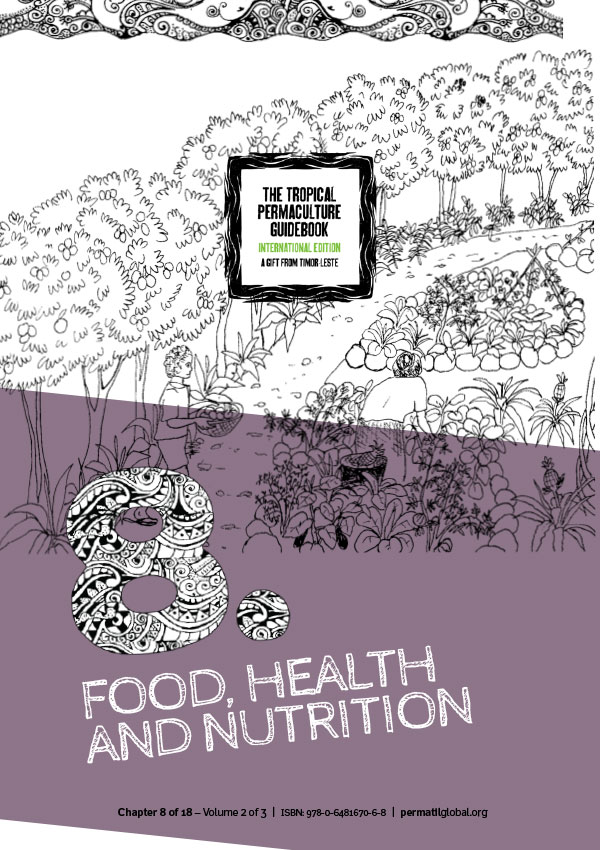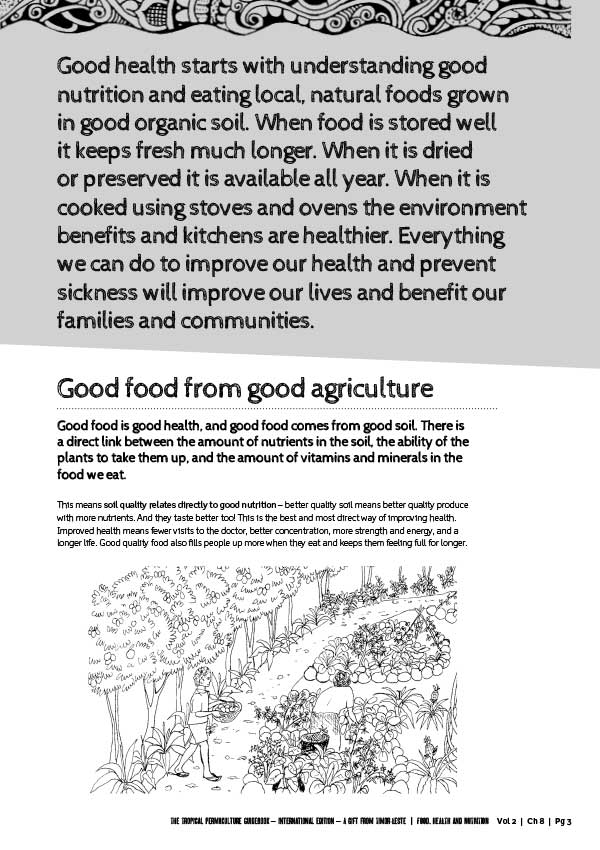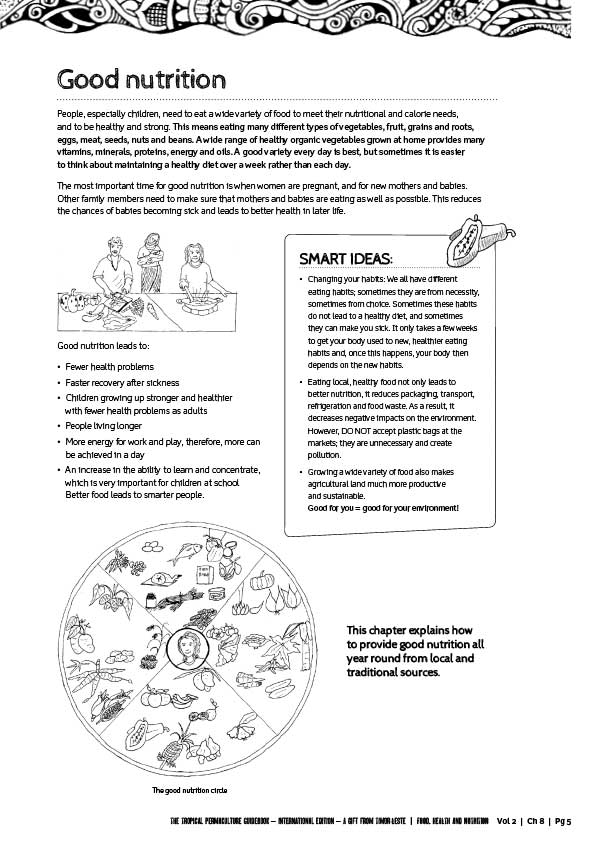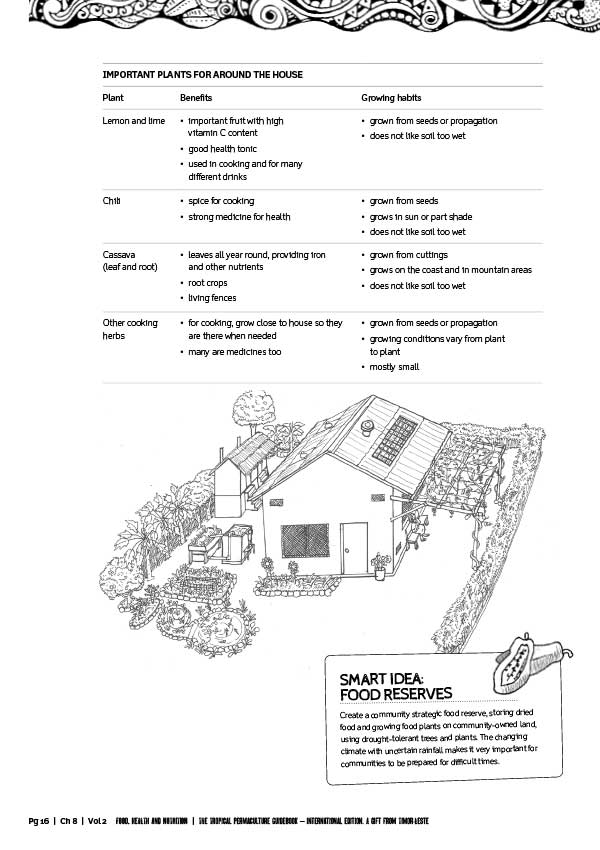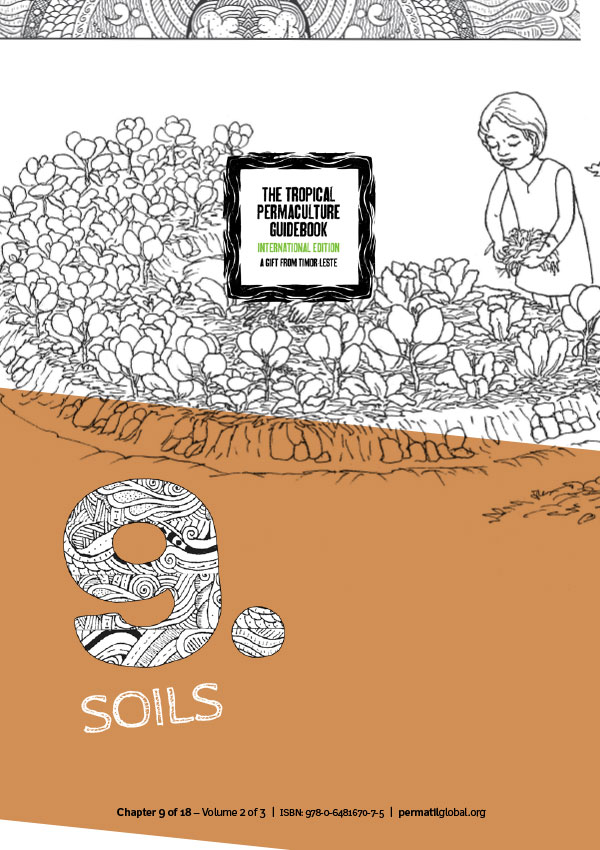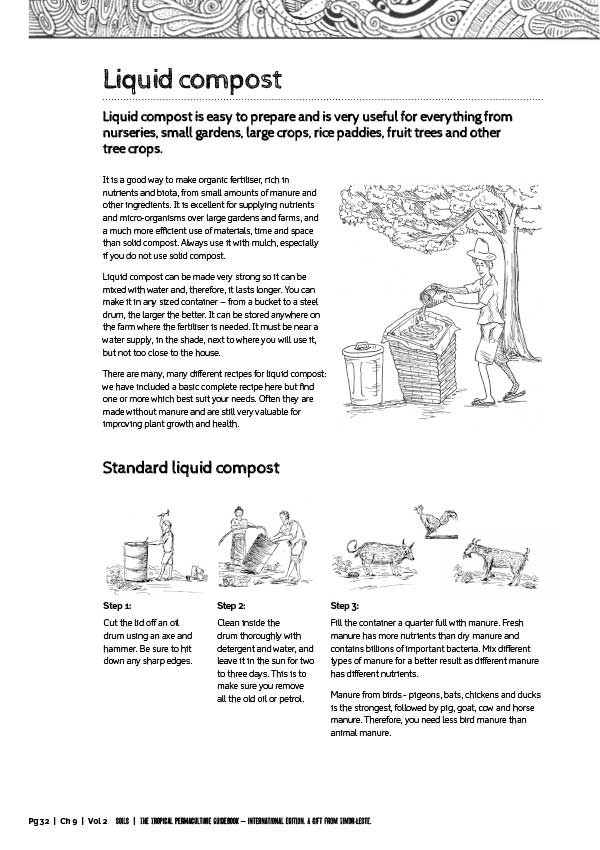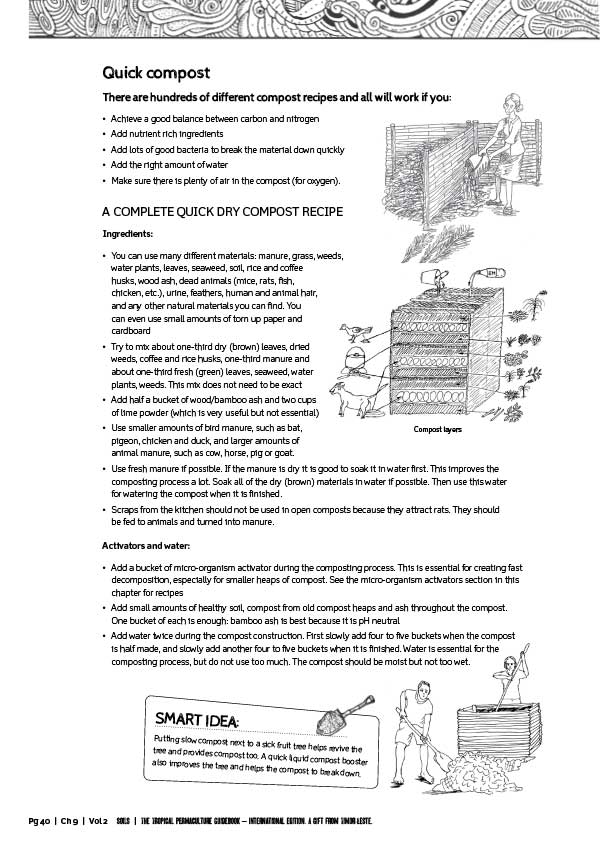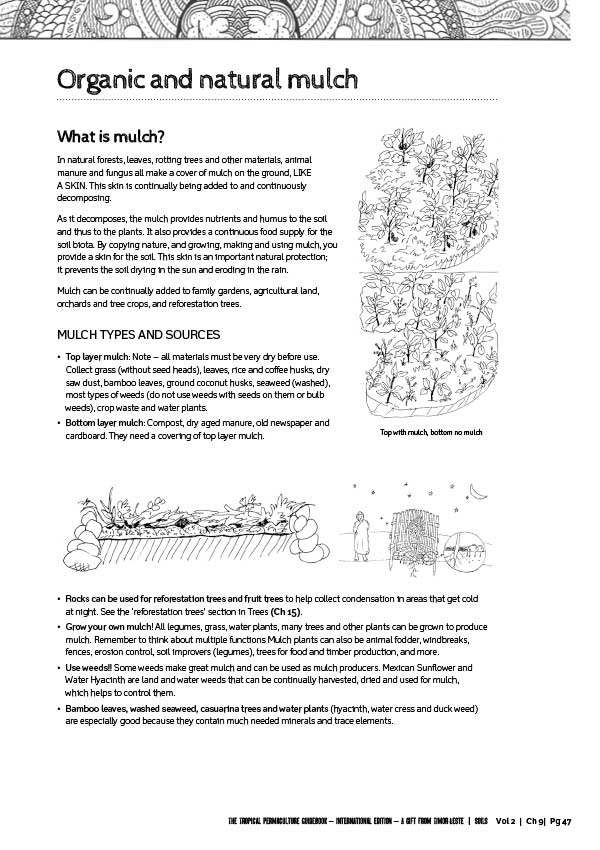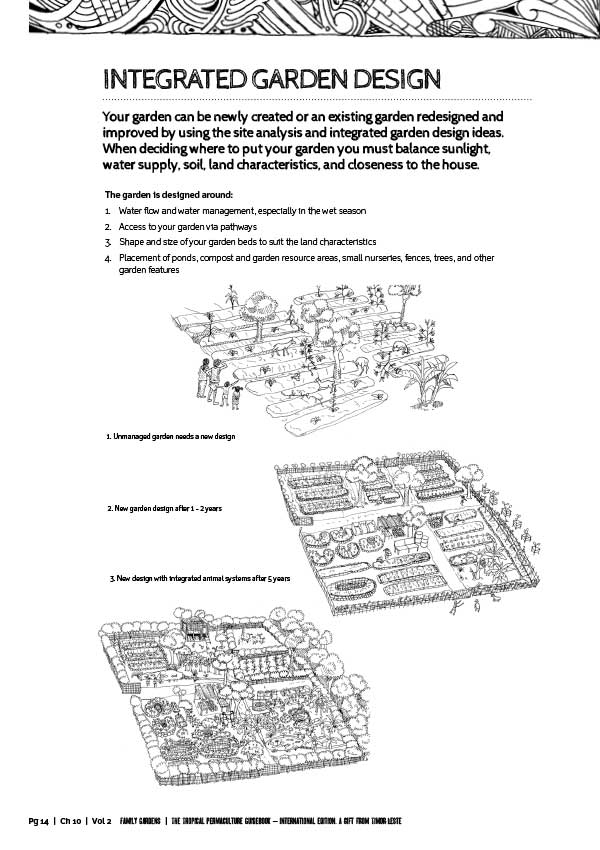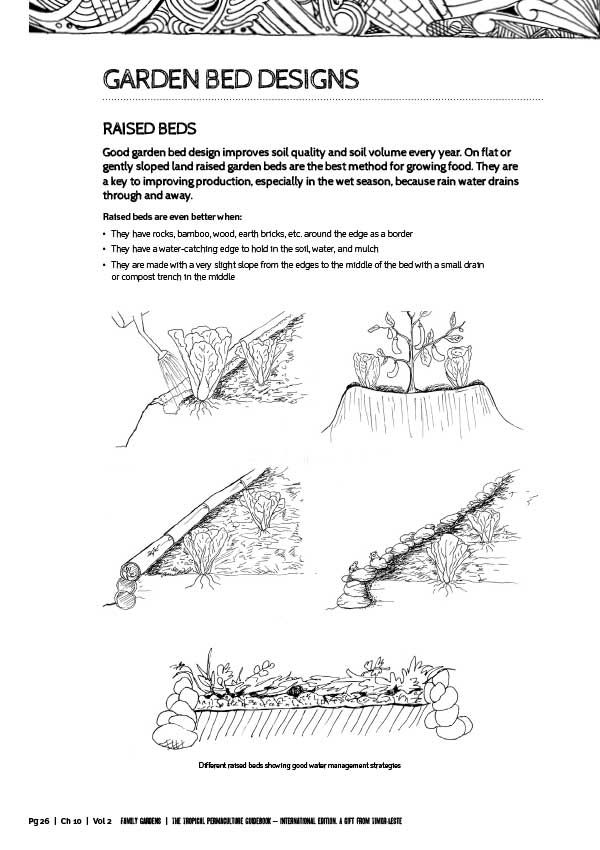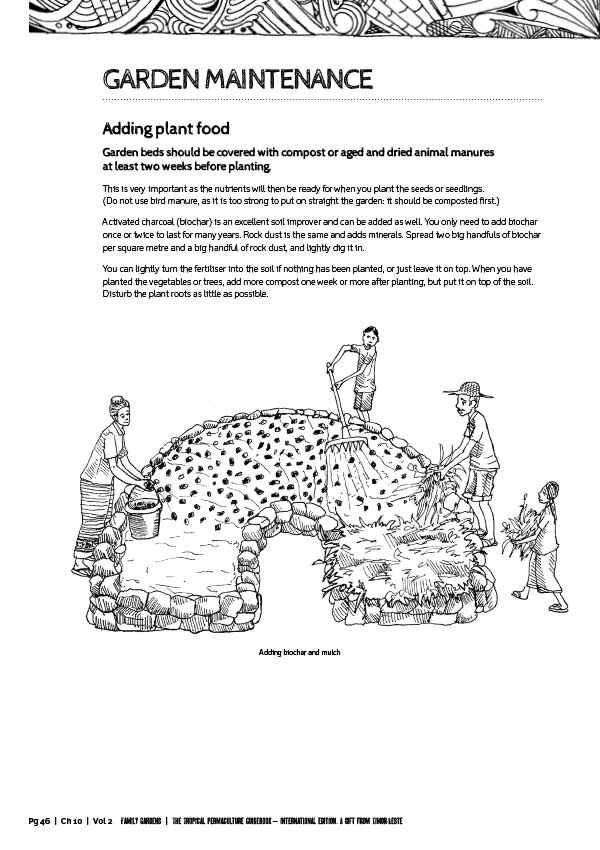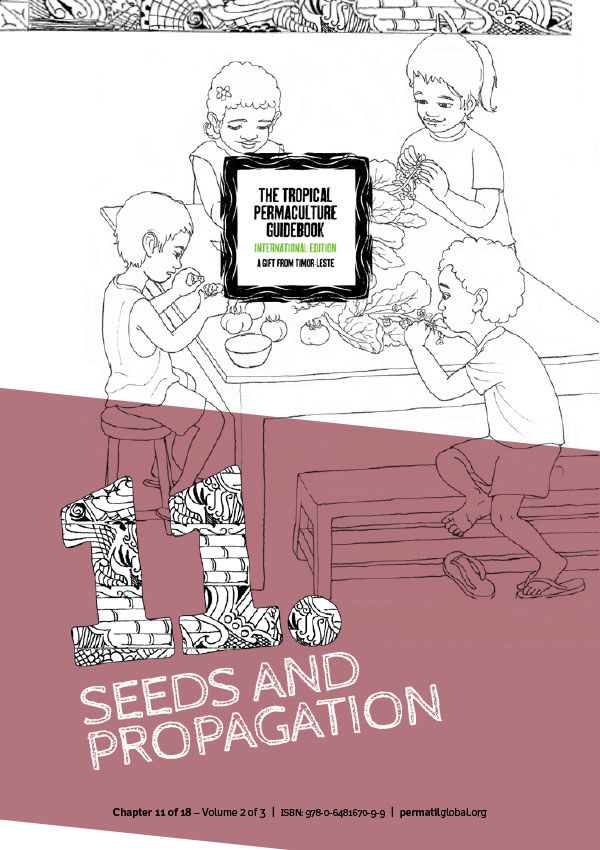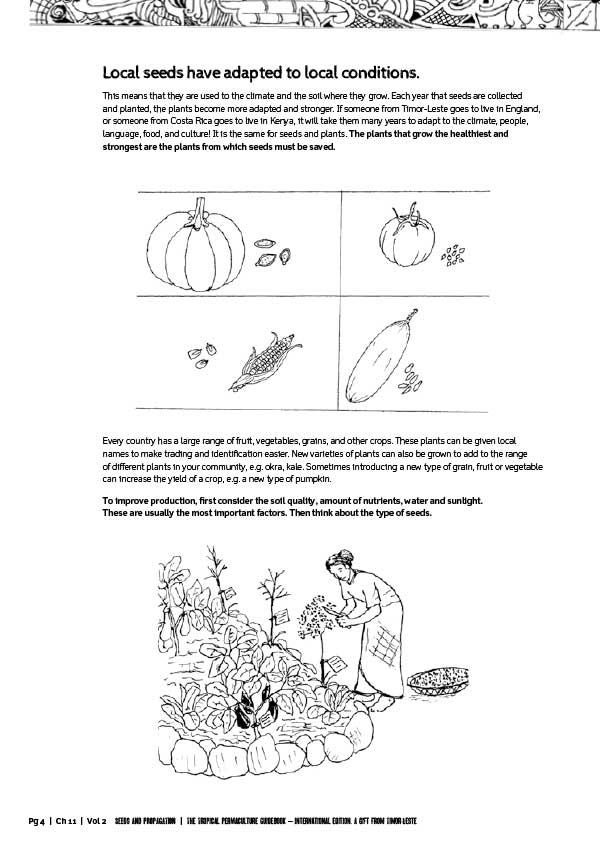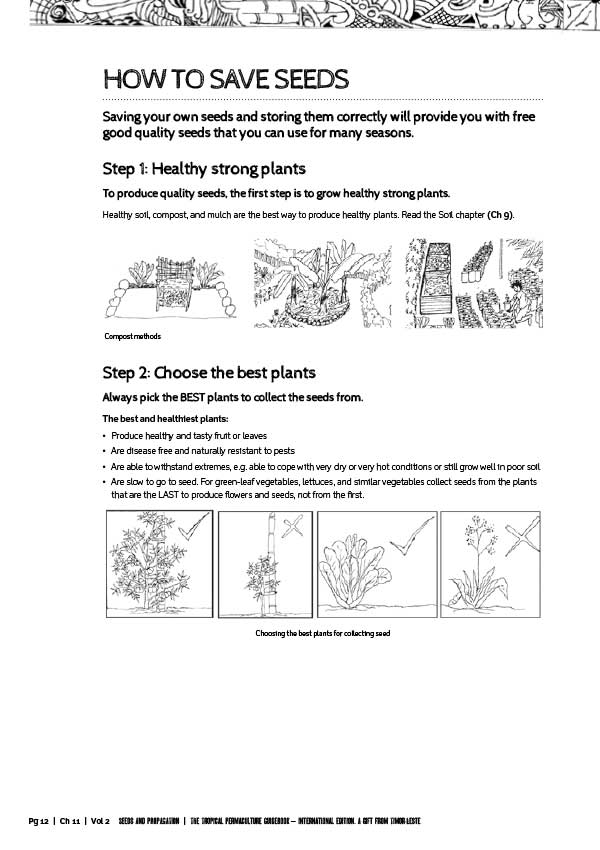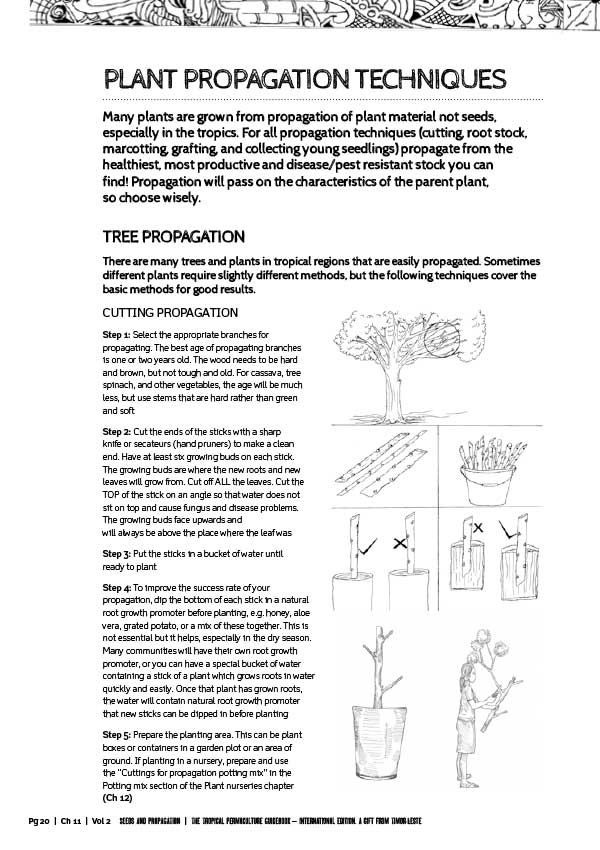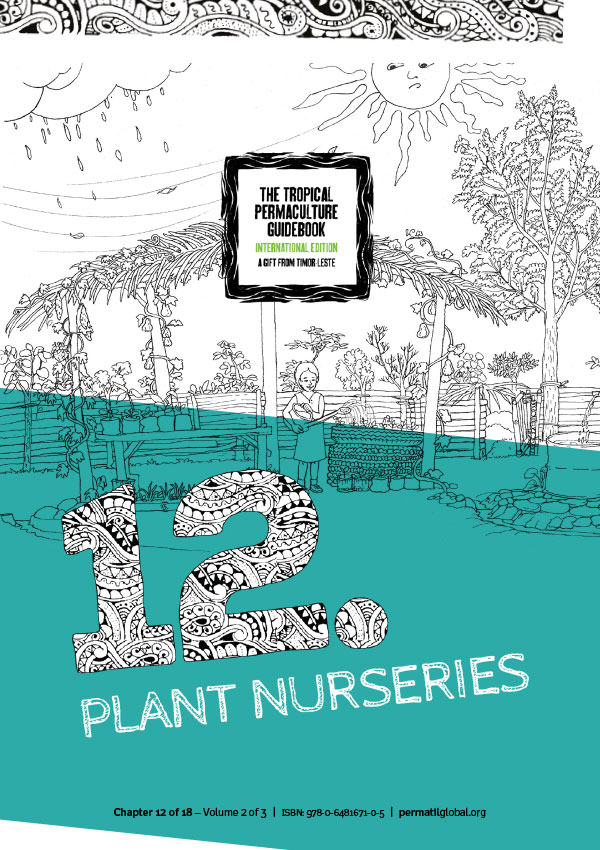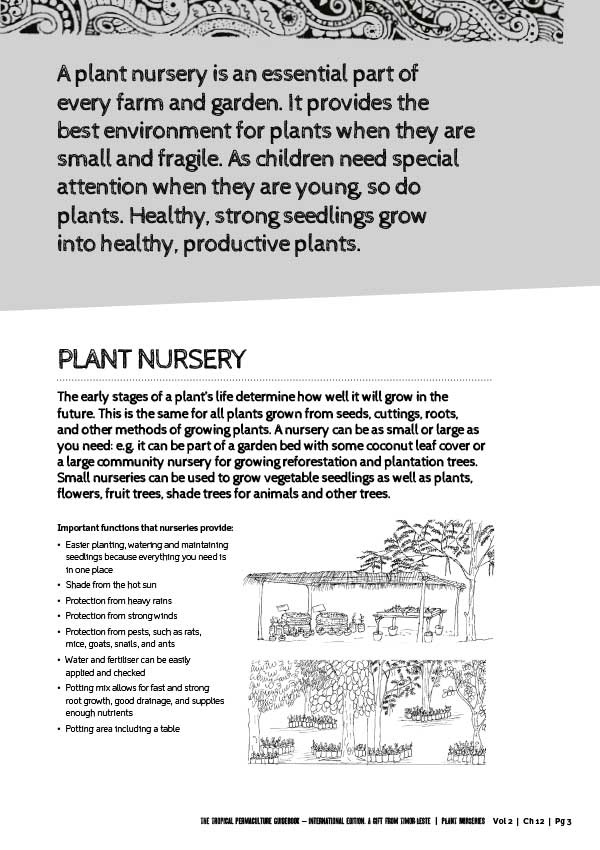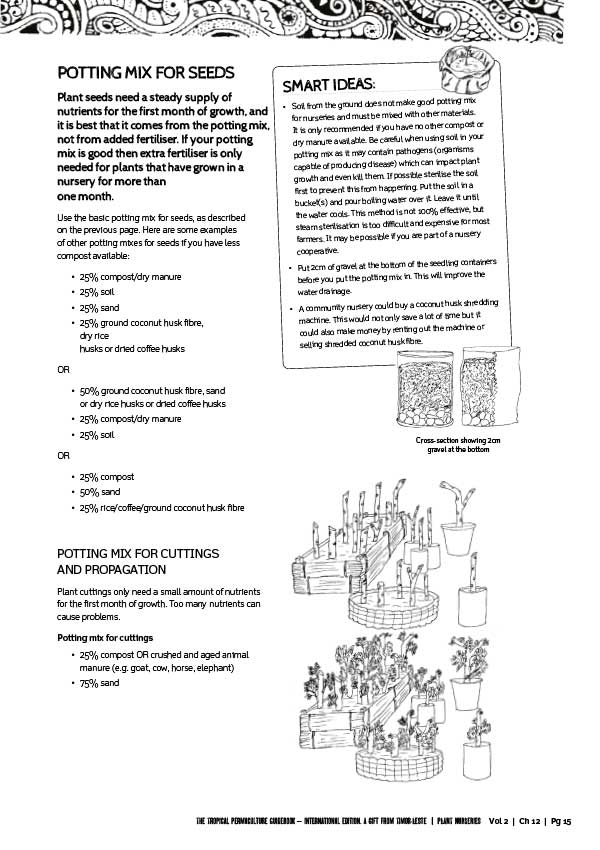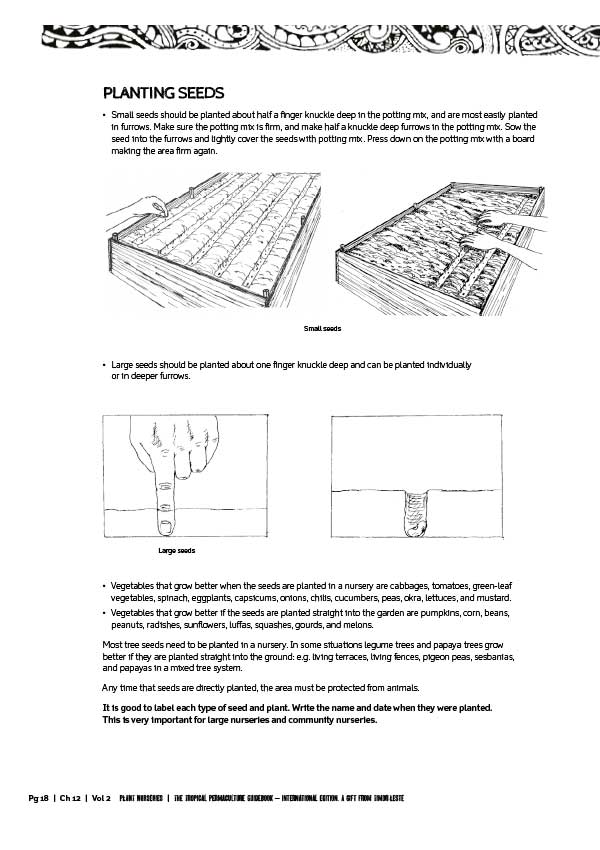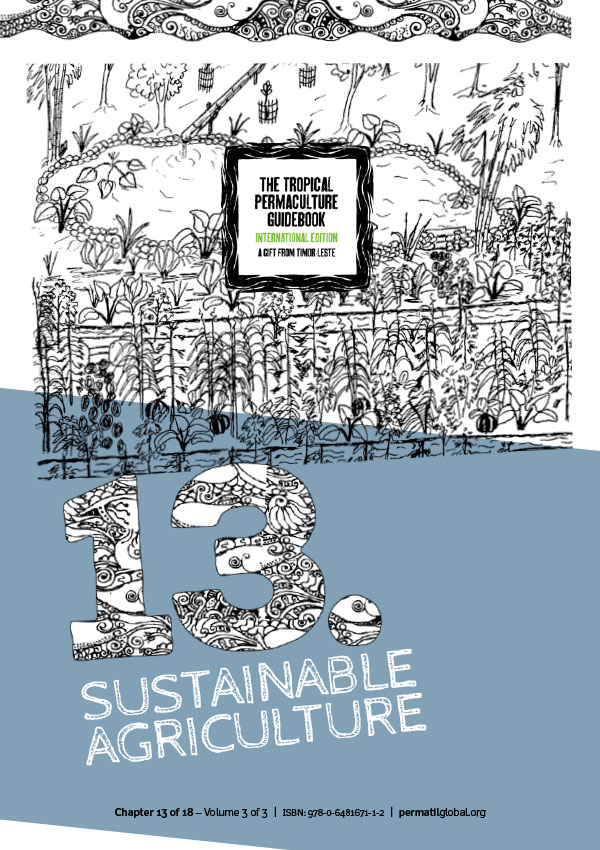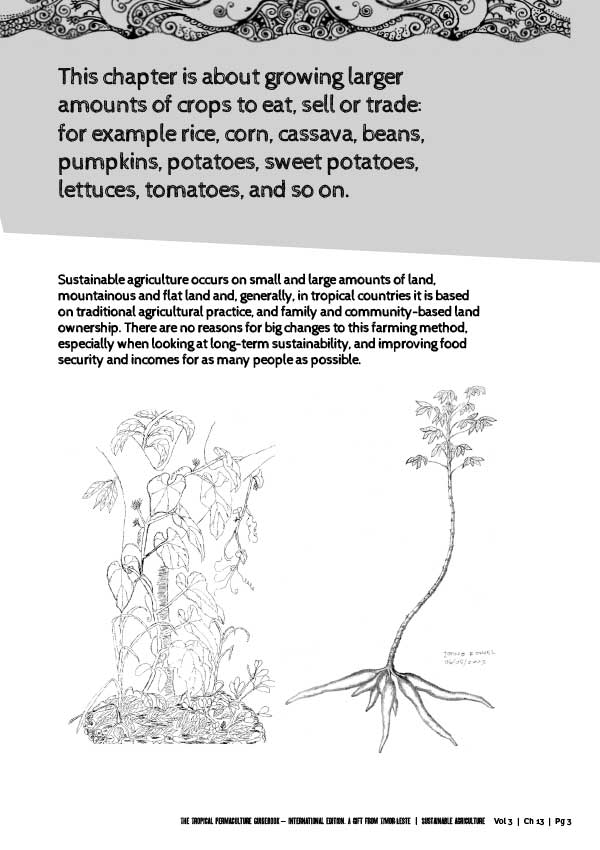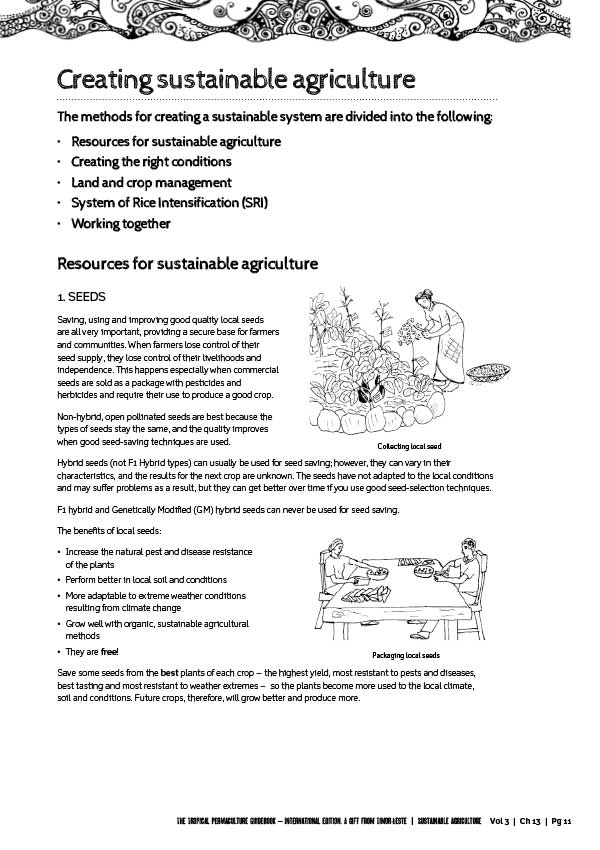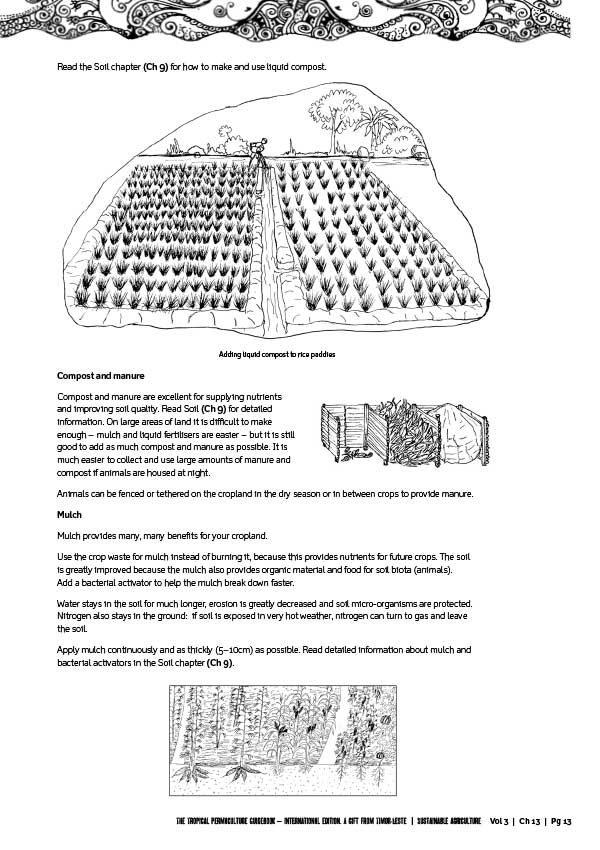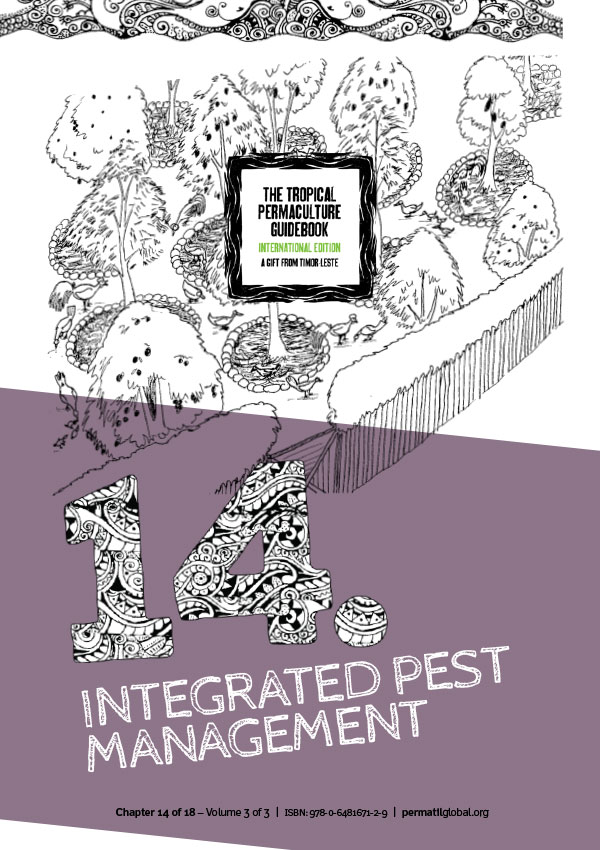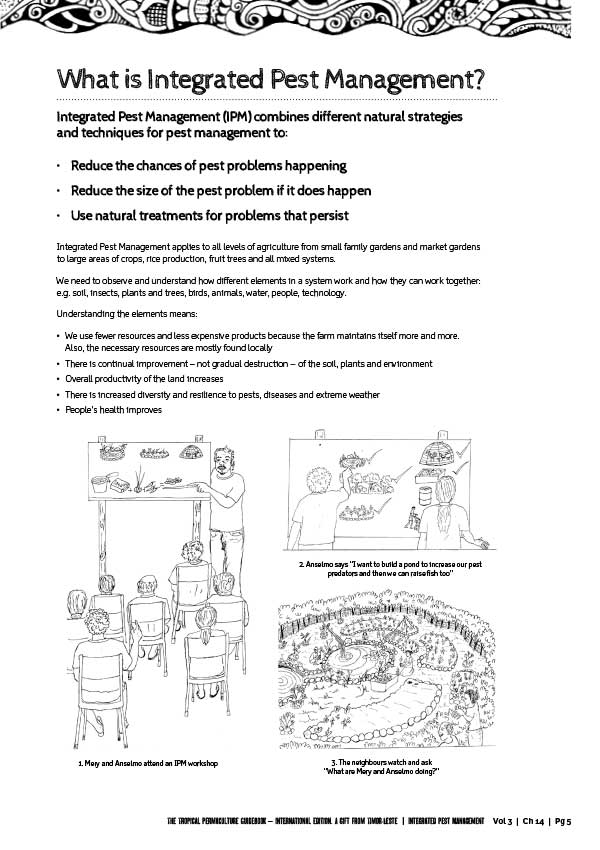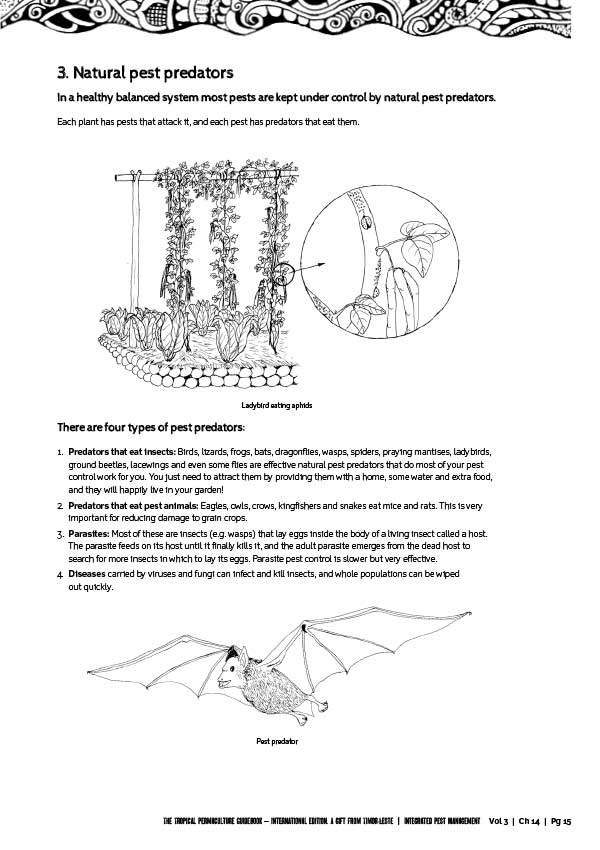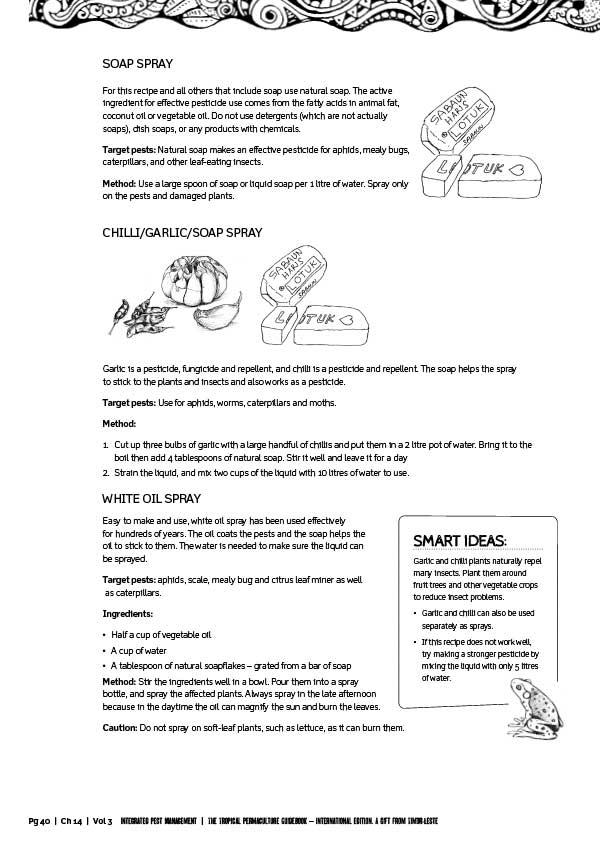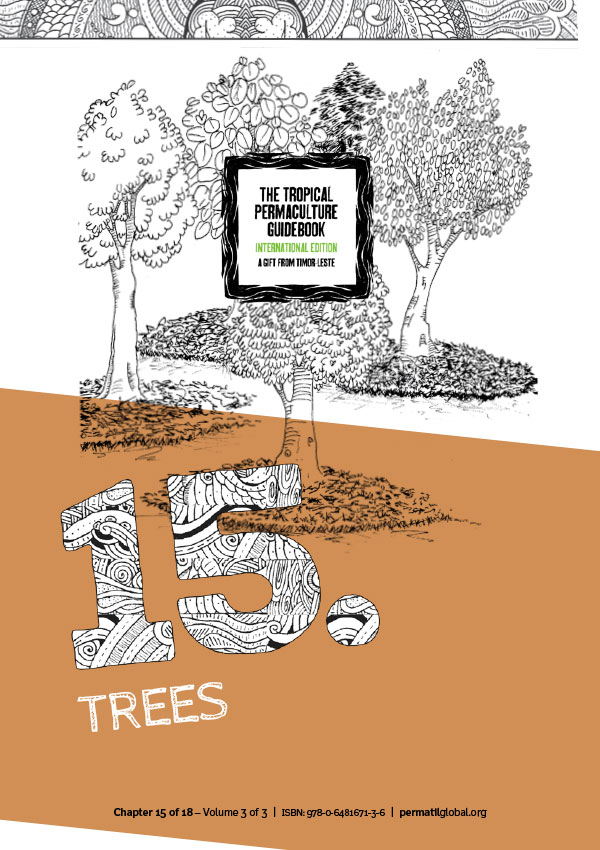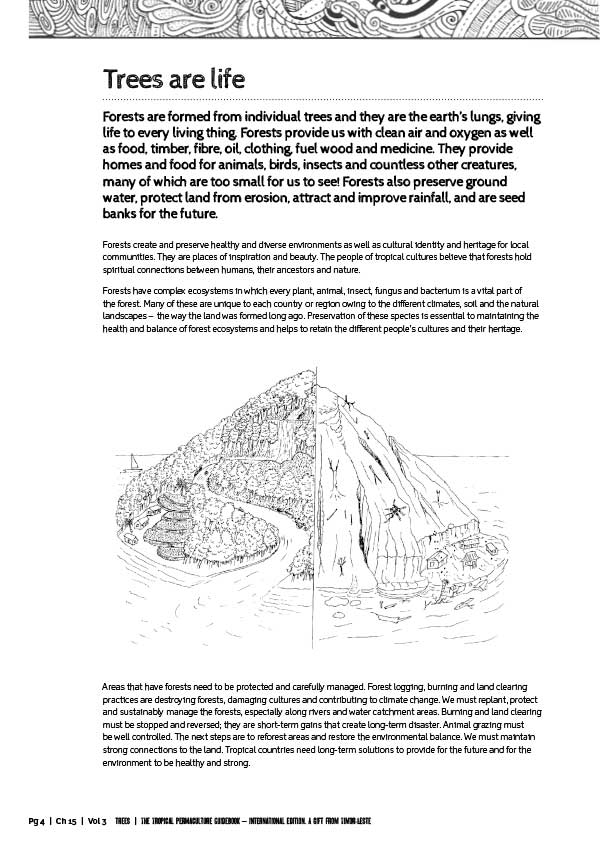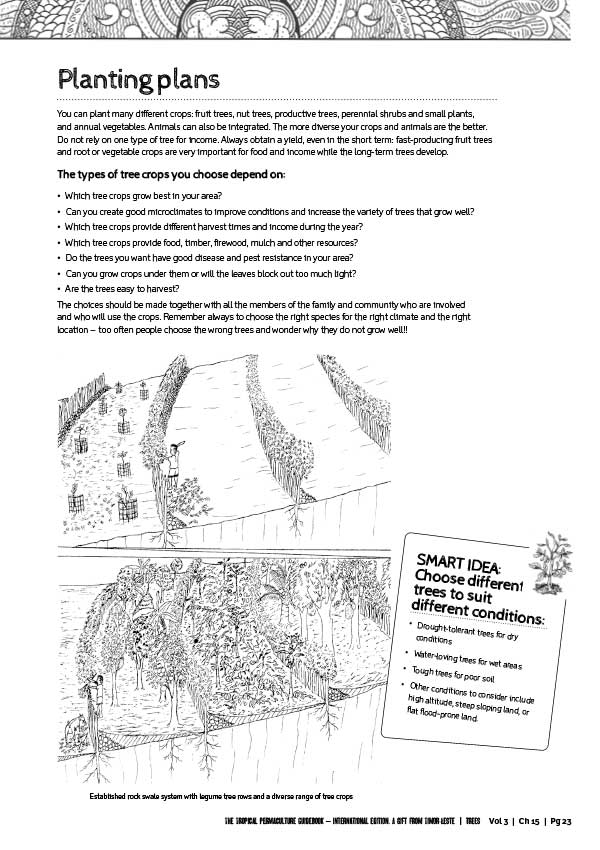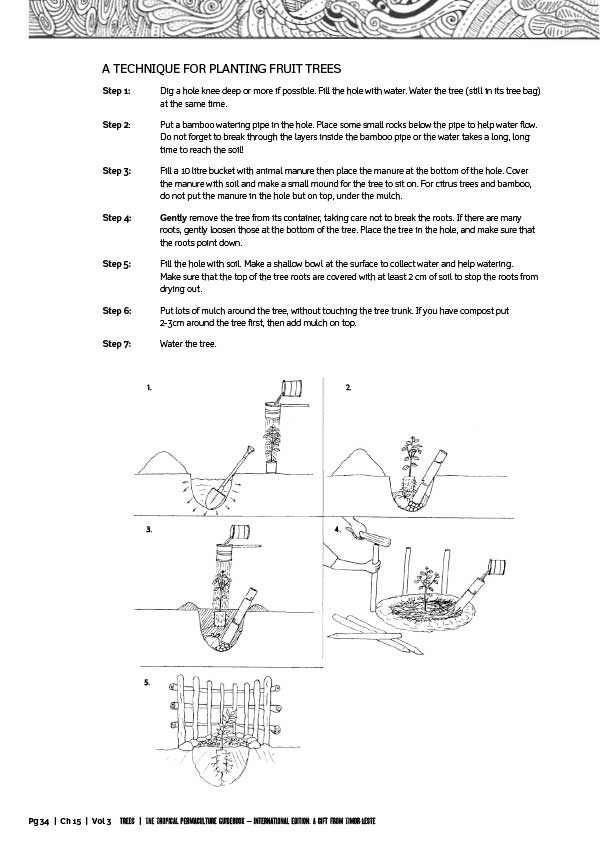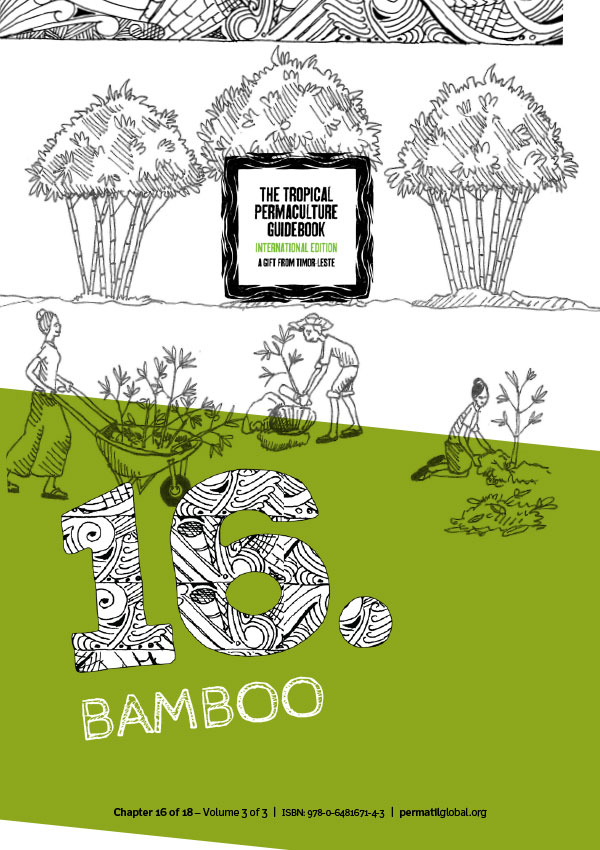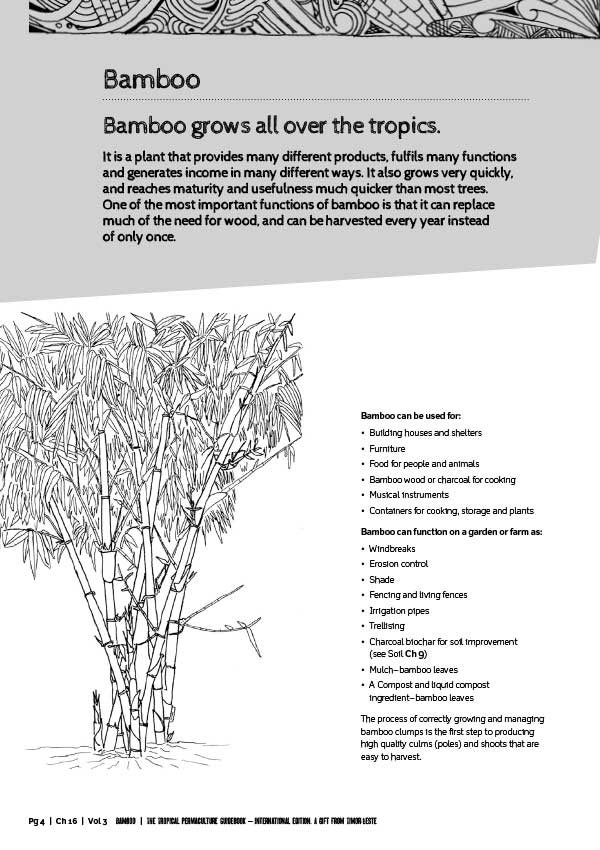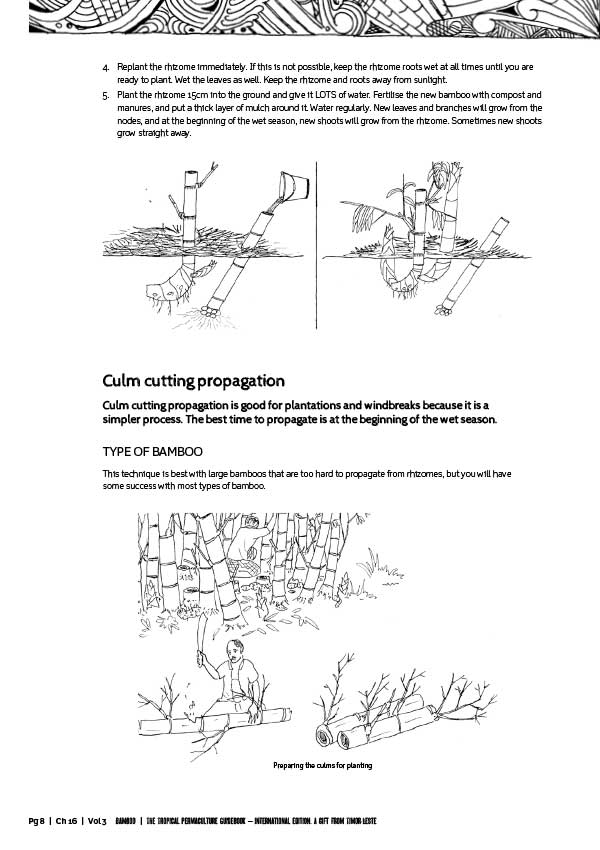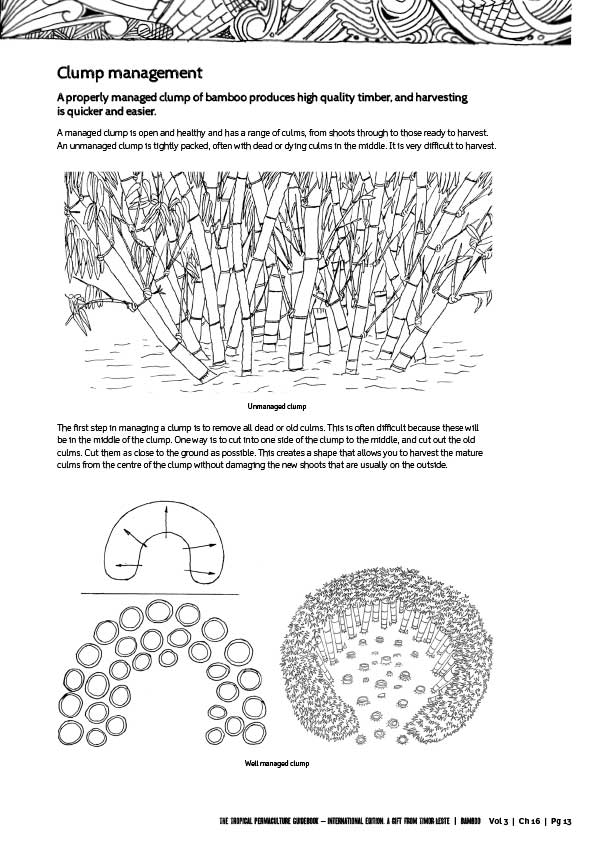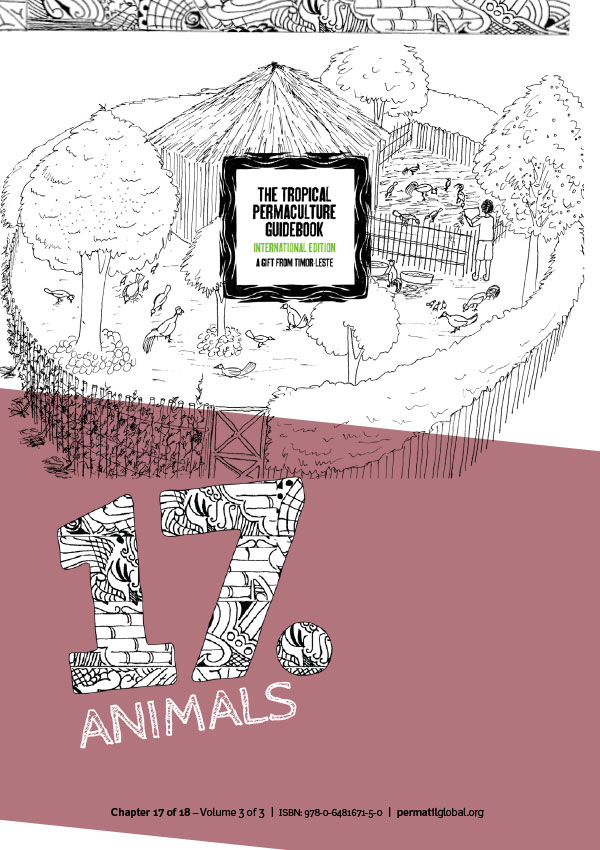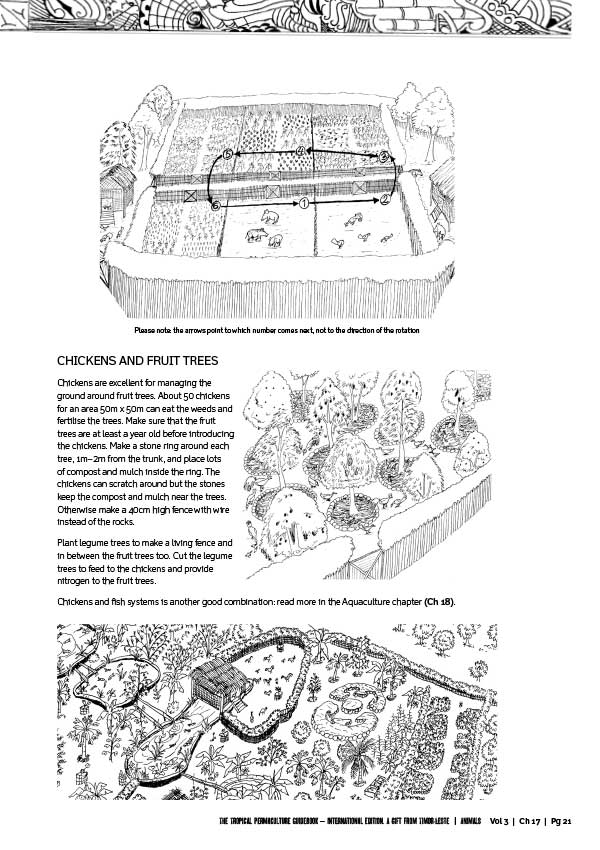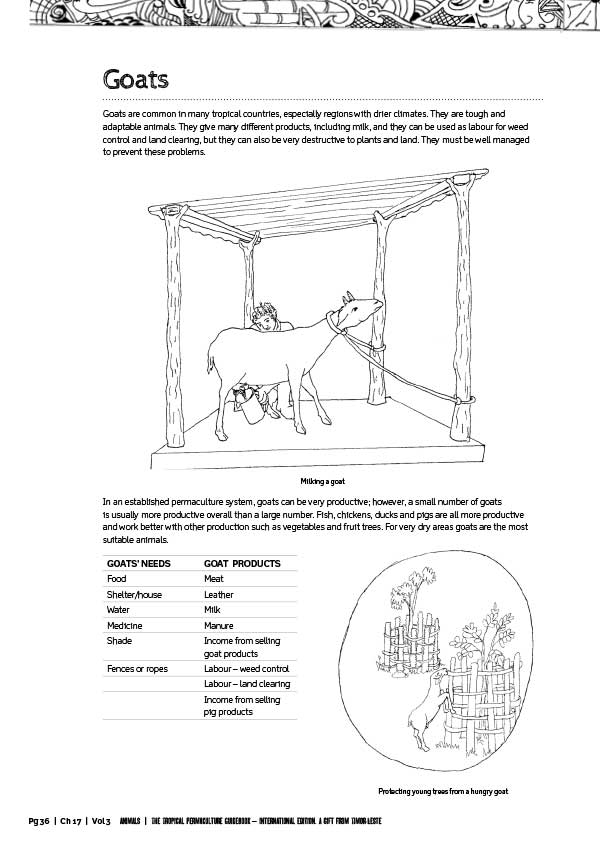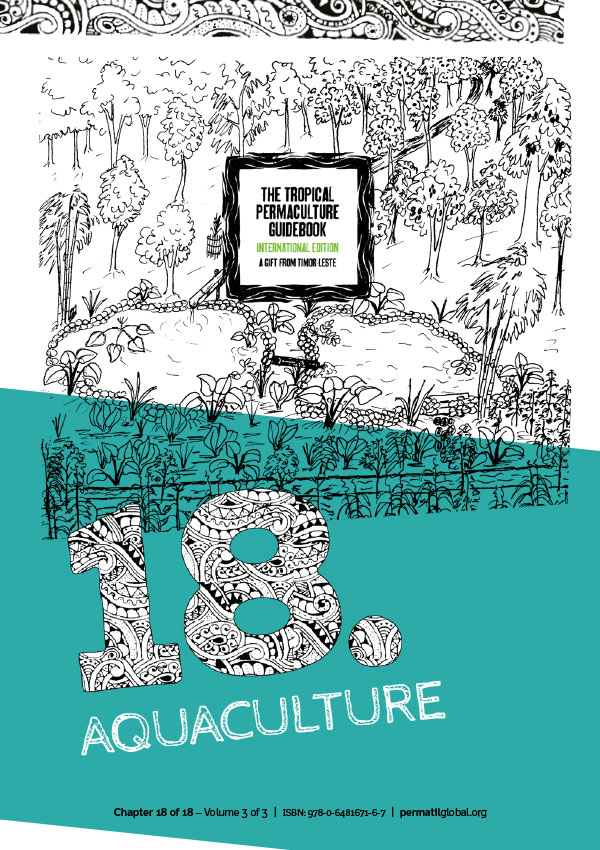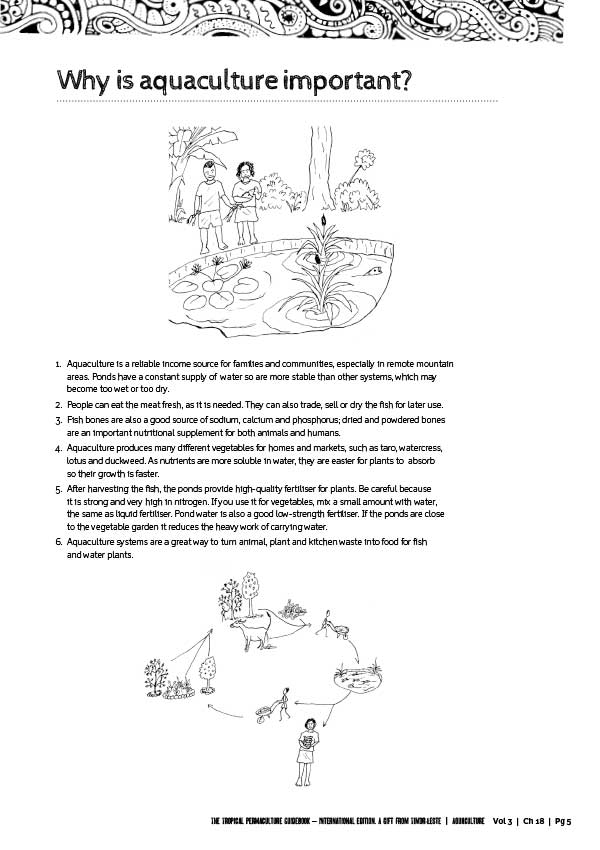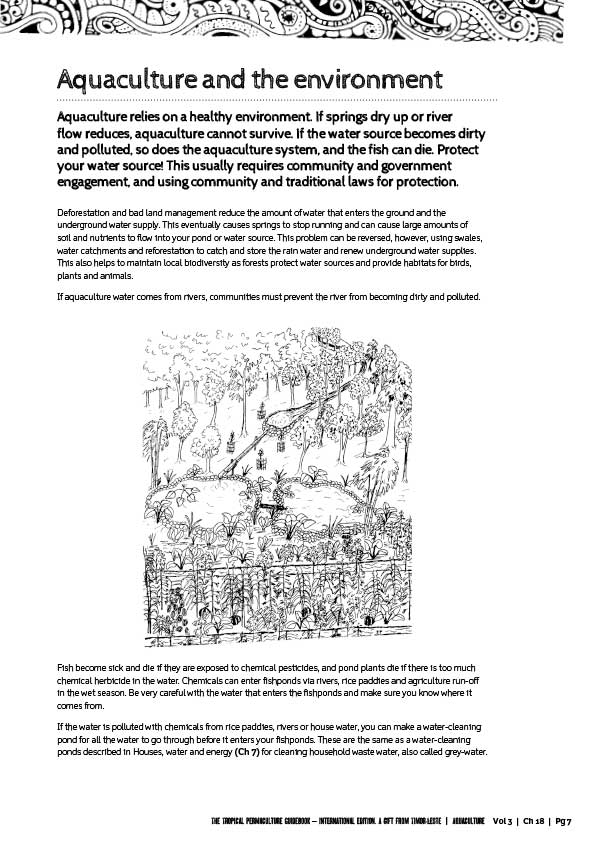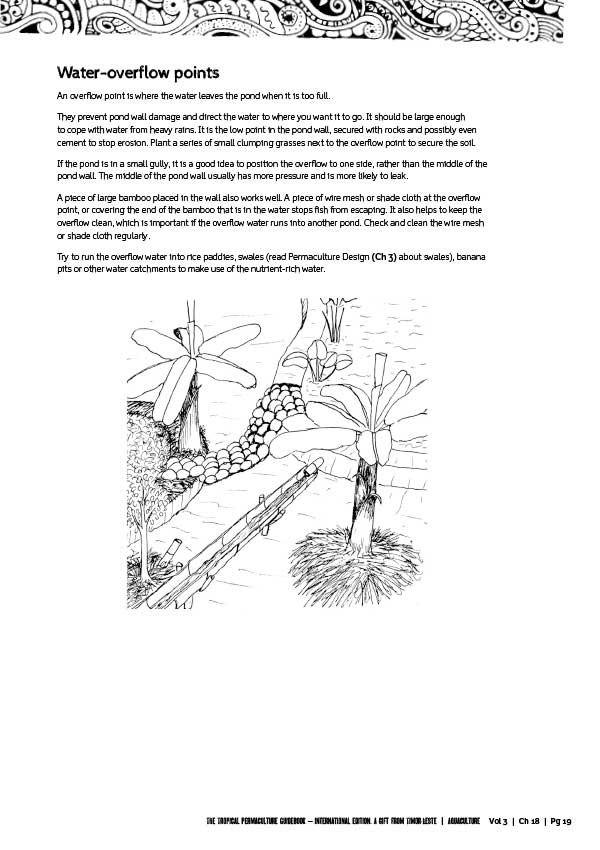Shop
Individual chapters
Chapters from Volume 1. Permaculture and people
Chapter 1. Permaculture ethics and principles
44 pages
Through permaculture we see the world in a new way. Permaculture provides the framework to design, create and maintain communities where all parts of our lifestyle achieve sustainability and resilience… more
This chapter is available in two sizes:
4.3MB (slow internet connection)
8.4MB (fast internet connection)
Through permaculture we see the world in a new way. Permaculture provides the framework to design, create and maintain communities where all parts of our lifestyle achieve sustainability and resilience. Techniques and strategies are based on natural science and patterns, using integration, innovation and regenerative practices to achieve our goals.
Permaculture’s ethics ensure that we are considerate and thoughtful in working with the environment, respecting all people and acting to improve the future:
- Earth care – care for the earth and all that live on it
- People care – equality, respect, and opportunity
- Fair share – distribute surplus, limit consumption, care for the future
Permaculture’s principles encourage and challenge us to be creative, follow initiative and use our common sense. They are a guide for creating permaculture designs and implementing permaculture strategies and techniques.
Contents include:
The ethics of permaculture
- Earth care
- People care
- Fair share
The design principles of permaculture
- Observe and interact
- Catch and store energy
- Obtain a yield
- Apply self-regulation and accept feedback
- Use and value renewable energy and resources
- Produce no waste
- Design from pattern to detail
- Integrate rather than segregate
- Use small and slow solutions
- Use and value diversity
- Use edges and value the marginal
- Creatively use and respond to change
Chapter 2. Natural patterns
20 pages
The world is made up of patterns. Every aspect of the earth, from the smallest animal to the largest mountain, contains patterns… more
This chapter is available in two sizes:
2.2MB (slow internet connection)
5.3MB (fast internet connection)
The world is made up of patterns. Every aspect of the earth, from the smallest animal to the largest mountain, contains patterns. Even the passage of time, divided into seasons and years, forms patterns. Many patterns are repeated in different forms, both living and non-living.
Patterns in nature are beautiful and functional. Natural patterns in design create beauty and function. Permaculture strategies are based on natural science and existing natural patterns. If you understand the patterns, you can work with them to design and create strong, resilient, diverse, and energy efficient systems.
Contents include:
- Natural patterns
- Patterns and design
- Natural patterns in practice
Chapter 3. Permaculture design strategies and techniques
88 pages
To design is to create, plan, invent and arrange. It is how permaculture takes different elements and brings them together as an integrated, whole system, the same as a natural ecosystem… more
This chapter is available in two sizes:
9.2MB (slow internet connection)
20.1MB (fast internet connection)
To design is to create, plan, invent and arrange. It is how permaculture takes different elements and brings them together as an integrated, whole system, the same as a natural ecosystem.
Permaculture design looks at ideas and methods for creating long-term, sustainable, self-maintaining systems for agricultural land, animal systems, houses, projects and communities.
Different design approaches included here are needs and products analysis, site analysis, zones and data collection as well as in-depth information about key techniques such as water and wind management, micro-climates, multifunctional approaches, and designing with time.
Contents include:
- Permaculture design
- Design techniques
- Analysis of elements
- Zones
- Observation and data collection
- Design techniques
– Multifunction
– Microclimates
– Imitating natural ecosystems
– Catching water: swale and terrace systems
– Windbreaks - Designing steps and stages
Chapter 4. Urban and community permaculture
55 pages
Permaculture is as important for cities and urban areas as it is for farms and rural areas. Cities must become more self-sustaining, less polluting and be powered by renewable energy… more
This chapter is available in two sizes:
5MB (slow internet connection)
6.9MB (fast internet connection)
Permaculture is as important for cities and urban areas as it is for farms and rural areas. Cities must become more self-sustaining, less polluting and be powered by renewable energy. They must also become more community focused, produce more food and have higher numbers of trees and more vegetation. Permaculture strategies and techniques can be used to achieve these goals. As cities grow, it is vital to have strategic designs for towns and urban areas to enable people to achieve a healthy, sustainable, good quality life.
Providing the tools for communities to be strong and resilient is a vital part of permaculture practice and for society moving forward, and local vibrant economies are an important part of that.
Contents include:
- Urban and community permaculture
- Elements of urban and community life
– Urban and community design
– Building design
– Water collection, storage, use and reuse
– Energy creation and use
– Transport
– Urban food production
– Community centres
– Small businesses and cooperatives
– Urban environment and ecology - Strong community
– Food Sovereignty
– Transition towns
– Community growth, inclusion and conflict resolution - Local economy
– Local currency
Chapter 5. Cooperatives
27 pages
Cooperatives and community groups are a traditional part of every culture, and are simply an extension of families and communities working together. In return they strengthen the community, bring in more resources and income, and add new skills… more
This chapter is available in two sizes:
2MB (slow internet connection)
3.5MB (fast internet connection)
Cooperatives and community groups are a traditional part of every culture, and are simply an extension of families and communities working together. In return they strengthen the community, bring in more resources and income, and add new skills. They are based on the idea of achieving something that cannot be achieved by individuals, by using their collective ability to work for a common goal. This need/goal/objective can be economic, social or provide a service; the important thing is that it is the community and individuals within it which benefit.
Learn about the importance of cooperatives, different types of cooperatives and how to set up and manage them.
Contents include:
- Importance of community cooperatives
- How to set up and manage
– Produce ideas – the seed
– Resource and product analysis – the seed grows
– Management structure – the tree trunk - Types of cooperatives
Chapter 6. Trainer’s guide
32 pages
The Permaculture trainers’ guide chapter is for people who want to teach permaculture courses. It provides insights into the barriers and issues that limit attendance and participation, especially for women, and suggests solutions to work with… more
This chapter is available in two sizes:
6.3MB (slow internet connection)
8.7MB (fast internet connection)
The Permaculture trainers’ guide chapter is for people who want to teach permaculture courses. It provides insights into the barriers and issues that limit attendance and participation, especially for women, and suggests solutions to work with. Community assessments, course planning, preparation and post-course follow up are just as important as the course itself. Learn more tools for these tasks and then delve into the many different approaches for delivering a high quality, fun and interactive course that caters for a wide range of learning styles and situations.
Contents include:
- Permaculture trainers’ guide
- A permaculture course
- Permaculture course planning
- Delivering the training
– Trainers
– Classroom techniques
– Training feedback and monitoring
Chapters from Volume 2. House and garden
Chapter 7. Houses, water and energy
78 pages
Houses, water and energy are connected to each other and to the broader environment. It is important to understand the connection when building houses, suburbs, villages or towns and for improving existing areas… more
This chapter is available in two sizes:
7.2MB (slow internet connection)
13.6MB (fast internet connection)
Houses, water and energy are connected to each other and to the broader environment. It is important to understand the connection when building houses, suburbs, villages or towns and for improving existing areas. Always consider the natural environment, including the water and energy sources when you are planning to build or improving your existing house. You can work with the environment to your future benefit, or ignore it to your future disadvantage. This principle is true for every part of the house and living area, including the kitchen, washroom and toilet — each section is part of the surrounding land.
This chapter explains how this works and gives plenty of techniques and strategies for creating energy efficient and comfortable houses, securing a clean and sustainable water supply and using renewable energy sources.
Contents include:
- How do you create a healthy house?
- Building a house
- Improvement techniques for houses
- Outside improvements
- Kitchens
- Washrooms
- Compost toilets
- Water supply and storage
- Renewable energy
Chapter 8. Food, health and nutrition
44 pages
Good health starts with understanding good nutrition and eating local, natural foods grown in good organic soil. When food is stored well it keeps fresh much longer… more
This chapter is available in two sizes:
2.6MB (slow internet connection)
4.2MB (fast internet connection)
Good health starts with understanding good nutrition and eating local, natural foods grown in good organic soil. When food is stored well it keeps fresh much longer. When it is dried or preserved it is available all year. When it is cooked using stoves and ovens the environment benefits and kitchens are healthier. Everything we can do to improve our health and prevent sickness will improve our lives and benefit our families and communities.
Contents include:
- Good food from good agriculture
- Good nutrition
- Good sources of nutrition
– Good drinks
– Food as medicine
– Important plants to grow around your house
– Plan an all-year food supply - Storing, drying and preserving vegetables
– Natural cold food storage
– Natural food drying
– Cooking with ovens and stoves
–Solar cookers and solar ovens
Chapter 9. Soils
64 pages
The soil beneath our feet provides our food as well as livelihoods for billions of people. It is also essential for the earth’s ecosystems and reducing climate change… more
This chapter is available in two sizes:
4.4MB (slow internet connection)
9.5MB (fast internet connection)
The soil beneath our feet provides our food as well as livelihoods for billions of people. It is also essential for the earth’s ecosystems and reducing climate change. Soil is beyond value and yet through bad practice it is quickly diminishing worldwide. This chapter explains how to protect, increase and improve your soil, for food and livelihood security and for the protection and regeneration of our earth.
Topics include soil identification, pH, deficiencies, organic soil building materials, bacterial activators, compost, liquid compost, biochar, worms and worm farms, mulch and legumes.
Contents include:
- What is healthy living soil?
- Benefits of healthy living soil
- Different types of soil – clay and sandy
- Soil pH – acid and alkaline
- Nutrient cycles
- Soil nutrients – the plant builders
- Biota – the soil builders
- Organic soil improvement strategies
– Micro-organism activators
– Biochar – activated charcoal
– Liquid compost
– Compost
– Worm farms
– Humanure
– Organic and natural mulch
– Legumes
– Green manure crops
Chapter 10. Family gardens
78 pages
A family garden provides many benefits for many people and is at the heart of family life. A healthy and productive family garden provides… more
This chapter is available in two sizes:
9.5MB (slow internet connection)
18.5MB (fast internet connection)
A family garden provides many benefits for many people and is at the heart of family life. A healthy and productive family garden provides:
- Tasty and nutritious non-staple foods all year round
- Extra food to make sauces, pickles, jams, etc
- Medicines, cooking herbs, and spices
- Income from the sale of surplus family garden produce
- Vegetable seedlings, as well as fruit trees, native trees, and other crops when the garden includes a small nursery
This chapter explains:
- Garden site analysis
- Integrated garden designs
- Garden bed designs, including ‘gardens with compost’ techniques
- Reducing garden maintenance
- Planting times and methods
- Integrating animals, paddies, and fish ponds with your garden
Contents include:
- Step by step garden site analysis
- Integrated garden design
– Water flow and water management
– Garden access and paths
– Garden beds
– Fences
– Garden structures
– Compost and compost resources storage
– Small nurseries
– Trees, shrubs, and flowers
– Ponds - Garden bed designs
– Raised beds
– No-dig garden beds
– Wicking garden beds
– Spiral gardens
– Sloping land garden beds
– Garden and compost integration
– Garden beds with fish ponds and paddies - Garden maintenance
- Planting methods and planting times
Chapter 11. Seeds and propagation
36 pages
Saving and using local seeds is one of the most important methods for strengthening agriculture, increasing the variety of plants, and achieving food sovereignty… more
This chapter is available in two sizes:
3MB (slow internet connection)
6MB (fast internet connection)
Saving and using local seeds is one of the most important methods for strengthening agriculture, increasing the variety of plants, and achieving food sovereignty.
- Everyone can collect and save seeds: it is cheap and easy to do.
- Saving and exchanging local seeds will increase the amount and variety of food that is grown.
- Local non-hybrid seeds generally have a higher nutritional content.
- Seeds are valuable and can be exchanged for other seeds or sold through a community seed bank.
- When good techniques are used for selecting and saving good seeds, the plant quality naturally improves each year.
- If there are no local seeds available, families and farmers have to buy seeds and are reliant on companies rather than on themselves. This decreases community resilience.
- A well-stocked seed bank containing proven local varieties is one of the best protections a community can have against the uncertainties brought by climate change.
Use this chapter to learn how to save and store high quality seed, both individually as as a community collective, and how to use a variety of propagating methods.
Contents include:
- Why save seeds?
- How to save seeds
– Step 1: healthy strong plants
– Step 2: choose the best plants
– Step 3: how to collect the seeds
– Step 4: cleaning the seeds
– Step 5: drying the seeds
– Step 6: storing the seeds
– Step 7: using the seed and plant material - Plant propagation techniques
- Community seed and plant group
- Responsible seed and plant use
Chapter 12. Plant nurseries
36 pages
A plant nursery is an essential part of every farm and garden. It provides the best environment for plants when they are small and fragile… more
This chapter is available in two sizes:
5.2MB (slow internet connection)
9MB (fast internet connection)
A plant nursery is an essential part of every farm and garden. It provides the best environment for plants when they are small and fragile. As children need special attention when they are young, so do plants. Healthy, strong seedlings grow into healthy, productive plants.
The early stages of a plant’s life determine how well it will grow in the future. This is the same for all plants grown from seeds, cuttings, roots, and other methods of growing plants. A nursery can be as small or large as you need: e.g. it can be part of a garden bed with some coconut leaf cover or a large community nursery for growing reforestation and plantation trees. Nurseries can be used to grow vegetable seedlings as well as plants, flowers, fruit trees, shade trees for animals and other trees.
This chapter explains all the basics of building and maintaining a healthy and productive plant nursery that is integrated with the rest of your garden or farm.
Contents include:
- Nursery location
- Nursery design and construction
- Seedling boxes and containers
- Potting mixes
- Problems of too many nutrients and fungus
- Planting seeds
- Root propagation plants
- Garden plot nurseries
- Nursery maintenance
– Watering
– Fertilising
– Transplanting
– Weed control
– Pest and disease control
– Preventing root problems
– Hardening plants before planting
Chapters from Volume 3. Regenerative agriculture
Chapter 13. Sustainable agriculture
64 pages
Sustainable agriculture occurs on small and large amounts of land, mountainous and flat land and, generally, in tropical countries it is based on traditional agricultural practice, and family and community-based land ownership… more
This chapter is available in two sizes:
5.9MB (slow internet connection)
12MB (fast internet connection)
Sustainable agriculture occurs on small and large amounts of land, mountainous and flat land and, generally, in tropical countries it is based on traditional agricultural practice, and family and community-based land ownership. There are no reasons for big changes to this farming method, especially when looking at long-term sustainability, and improving food security and incomes for as many people as possible.
Sustainable, regenerative and resilient agricultural systems:
- Are culturally appropriate
- Improve the soil, land and conditions for production every year
- Repair damaged soil and restore natural biodiversity
- Maximise production on agricultural land already in use, in an organic and sustainable way
- Are affordable for all community members
- Form community cooperatives and farmers’ groups that share resources, costs, techniques and knowledge
- Improve the storage, marketing and transport of produce
- Are diverse in yields and types of land management
- Are integrated systems
Contents include:
- About sustainable agriculture
- Agriculture and the natural environment
- Creating sustainable agriculture
– Resources for sustainable agriculture
– Creating the right conditions
– Land and crop management - Mushrooms
- Post-harvest storage and use
Chapter 14. Integrated pest management
68 pages
Long-term pest and disease management solutions must bring back a natural balance between agriculture, gardens and the natural environment… more
This chapter is available in two sizes:
6.1MB (slow internet connection)
11.9MB (fast internet connection)
Long-term pest and disease management solutions must bring back a natural balance between agriculture, gardens and the natural environment. Scientists have known for a long time that over 90% of insects are actually harmless or beneficial to crops and other plants. Now they realise that this is similar for bacteria and fungi. We need them in the garden and in the soil to maintain good production, so we must use natural growing techniques!
Every element of the environment – and that includes us – is connected to every other part. What happens to one element affects every other element of the system or environment. This is an important philosophy behind IPM and future sustainability.
Integrated Pest Management (IPM) combines different natural strategies and techniques for pest management to:
- Reduce the chances of pest problems happening.
- Reduce the size of the pest problem if it does happen.
- Use natural treatments for problems that persist.
IPM applies to all levels of agriculture from small family gardens and market gardens to large areas of crops, rice production, fruit trees and all mixed systems.
Contents include:
- What is Integrated Pest Management?
- IPM strategies and techniques
- Importance of healthy living soil
- Best growing conditions
- Natural pest predators
- Healthy environment
- Use non-hybrid, open pollinated seeds
- Good crop management
- Preventative measures
- Using chickens and ducks for pest control
- Natural pesticides
– Natural fungicides
- Other pests
Chapter 15. Trees
72 pages
Forests are formed from individual trees and they are the earth’s lungs, giving life to every living thing. Forests provide us with clean air and oxygen as well as food, timber, fibre, oil, clothing, fuel wood and medicine… more
This chapter is available in two sizes:
6.5MB (slow internet connection)
13MB (fast internet connection)
Forests are formed from individual trees and they are the earth’s lungs, giving life to every living thing. Forests provide us with clean air and oxygen as well as food, timber, fibre, oil, clothing, fuel wood and medicine. They provide homes and food for animals, birds, insects and countless other creatures, many of which are too small for us to see! Forests also preserve ground water, protect land from erosion, attract and improve rainfall, and are seed banks for the future.
Using permaculture design trees are grown to be part of a productive living system. This chapter explains how to achieve this with agro-forestry, food forest systems, annual-perennial food production systems and native regeneration. Also included is how to plant and manage trees organically for good production.
Contents include:
- Trees are life
- Healthy and sustainable forest systems
- Productive trees and permaculture tree systems
- Preparing the land
- Tree terrace systems
- Planting plans
- Fruit tree and tree crop maintenance
- Reforestation
Chapter 16. Bamboo
40 pages
Bamboo grows all over the tropics. It is a plant that provides many different products, fulfils many functions and generates income in many different ways… more
This chapter is available in two sizes:
3.2MB (slow internet connection)
6.5MB (fast internet connection)
Bamboo grows all over the tropics. It is a plant that provides many different products, fulfils many functions and generates income in many different ways. It also grows very quickly, and reaches maturity and usefulness much quicker than most trees. One of the most important functions of bamboo is that it can replace much of the need for wood, and can be harvested every year instead of only once.
The process of correctly growing and managing bamboo clumps is the first step to producing high quality culms (poles) and shoots that are easy to harvest. This chapter describes how to grow, manage, harvest, cure and use bamboo as part of a permaculture system and for maximising its huge potential.
Contents include:
- Bamboo
- The yearly bamboo cycle
- Bamboo propagation
- Where to grow bamboo for the best results
- How to grow high quality bamboo culms
- How to harvest high quality bamboo culms
- Bamboo products
- Bamboo farm products and functions
Chapter 17. Animals
84 pages
This chapter looks at the different animals that people raise in tropical countries. It considers how to provide the food, housing and medicine needed for healthy animals using local and traditional materials and the appropriate modern technology… more
This chapter is available in two sizes:
7.3MB (slow internet connection)
14.6MB (fast internet connection)
This chapter looks at the different animals that people raise in tropical countries. It considers how to provide the food, housing and medicine needed for healthy animals using local and traditional materials and the appropriate modern technology. Raising animals using permaculture methods regenerates the land on which the animals are raised as well as the surrounding environment. This chapter also looks at different ways to integrate animals into agriculture, agro-forestry and aquaculture systems, and how to use their natural habits as productive labour.
Contents include:
- The importance of animals
- Chickens
- Ducks
- Pigs
- Goats
- Cows
- Buffalo
- Leather
- Small animals
- Working together with communities
- Market access
- Animal rights
Chapter 18. Aquaculture
64 pages
Aquaculture is any type of water, pond or wetland environment which grows or farms aquatic animals (e.g. fish, eels, crayfish, prawns, etc.) and plants. An aquaculture system provides more produce for the same area of land than any animal farming method… more
This chapter is available in two sizes:
6.6MB (slow internet connection)
11.3MB (fast internet connection)
Aquaculture is any type of water, pond or wetland environment which grows or farms aquatic animals (e.g. fish, eels, crayfish, prawns, etc.) and plants. An aquaculture system provides more produce for the same area of land than any animal farming method. It is the most efficient way to develop high quality meat with lots of protein, fats and oils. Even a small pond provides enough fish to improve diets and health significantly, especially for children.
This chapter explains how to design, build and manage an aquaculture system; how to use all the extra benefits and how to integrate it with other animal and plant production.
Contents include:
- Why is aquaculture important?
- Aquaculture and the environment
- Step-by-step aquaculture systems
- Fish production
- Types of fish
- Pond management
- Wet-season fishponds
- Fish integration with other systems
- Drying and storing fish


